
Universe Today
Space and astronomy news
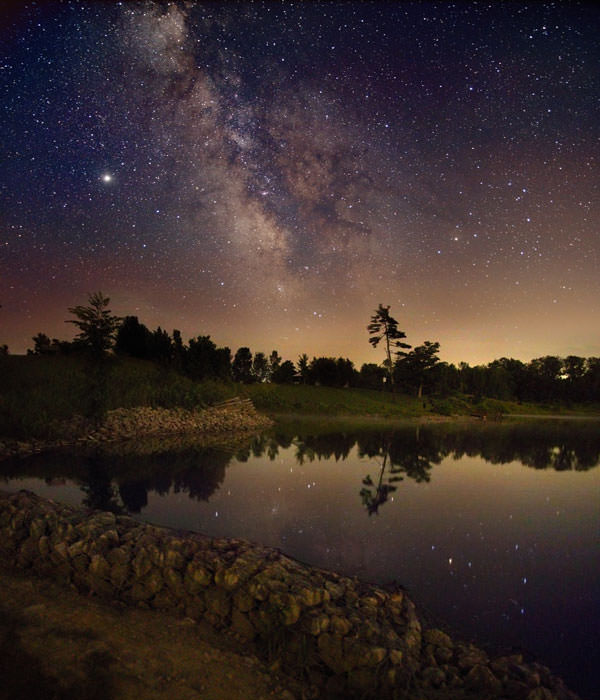

The Journey of Light, From the Stars to Your Eyes
This week, millions of people will turn their eyes to the skies in anticipation of the 2015 Perseid meteor shower . But what happens on less eventful nights, when we find ourselves gazing upward simply to admire the deep, dark, star-spangled sky? Far away from the glow of civilization, we humans can survey thousands of tiny pinpricks of light. But how? Where does that light come from? How does it make its way to us? And how do our brains sort all that incoming energy into such a profoundly breathtaking sight? Our story begins lightyears away, deep in the heart of a sun-like star, where gravity’s immense inward pressure keeps temperatures high and atoms disassembled. Free protons hurtle around the core, occasionally attaining the blistering energies necessary to overcome their electromagnetic repulsion, collide, and stick together in pairs of two.
So-called diprotons are unstable and tend to disband as quickly as they arise. And if it weren’t for the subatomic antics of the weak nuclear force, this would be the end of the line: no fusion, no starlight, no us. However, on very rare occasions, a process called beta decay transforms one proton in the pair into a neutron. This new partnership forms what is known as deuterium , or heavy hydrogen, and opens the door to further nuclear fusion reactions.
Indeed, once deuterium enters the mix, particle pileups happen far more frequently. A free proton slams into deuterium, creating helium-3. Additional impacts build upon one another to forge helium-4 and heavier elements like oxygen and carbon.
Such collisions do more than just build up more massive atoms; in fact, every impact listed above releases an enormous amount of energy in the form of gamma rays. These high-energy photons streak outward, providing thermonuclear pressure that counterbalances the star’s gravity. Tens or even hundreds of thousands of years later, battered, bruised, and energetically squelched from fighting their way through a sun-sized blizzard of other particles, they emerge from the star’s surface as visible, ultraviolet, and infrared light.
But this is only half the story. The light then has to stream across vast reaches of space in order to reach the Earth – a process that, provided the star of origin is in our own galaxy, can take anywhere from 4.2 years to many thousands of years! At least… from your perspective. Since photons are massless, they don’t experience any time at all! And even after eluding what, for any other massive entity in the Universe, would be downright interminable flight times, conditions still must align so that you can see even one twinkle of the light from a faraway star.
That is, it must be dark, and you must be looking up.
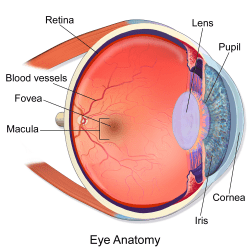
The incoming stream of photons then makes its way through your cornea and lens and onto your retina, a highly vascular layer of tissue that lines the back of the eye. There, each tiny packet of light impinges upon one of two types of photoreceptor cell: a rod, or a cone.
Most photons detected under the low-light conditions of stargazing will activate rod cells. These cells are so light-sensitive that, in dark enough conditions, they can be excited by a single photon! Rods cannot detect color, but are far more abundant than cones and are found all across the retina, including around the periphery.
The less numerous, more color-hungry cone cells are densely concentrated at the center of the retina, in a region called the fovea (this explains why dim stars that are visible in your side vision suddenly seem to disappear when you attempt to look at them straight-on). Despite their relative insensitivity, cone cells can be activated by very bright starlight, enabling you to perceive stars like Vega as blue and Betelgeuse as red.
But whether bright light or dim, every photon has the same endpoint once it reaches one of your eyes’ photoreceptors: a molecule of vitamin A, which is bound together with a specialized protein called an opsin . Vitamin A absorbs the light and triggers a signal cascade: ion channels open and charged particles rush across a membrane, generating an electrical impulse that travels up the optic nerve and into the brain. By the time this signal reaches your brain’s visual cortex, various neural pathways are already hard at work translating this complex biochemistry into what you once thought was a simple, intuitive, and poetic understanding of the heavens above…
The stars, they shine.
So the next time you go outside in the darker hours, take a moment to appreciate the great lengths it takes for just a single twinkle of light to travel from a series of nuclear reactions in the bustling center of a distant star, across the vastness of space and time, through your body’s electrochemical pathways, and into your conscious mind.
It gives every last one of those corny love songs new meaning, doesn’t it?
Share this:
- Click to share on Facebook (Opens in new window)
- Click to share on Twitter (Opens in new window)
- Click to share on Reddit (Opens in new window)
5 Replies to “The Journey of Light, From the Stars to Your Eyes”
Fabulous presentation of this great phenomenon. And I am supposed to believe it all just happened by accident.
The reference to 16,000 years is presumably meant to be 160,000 years (unless, perhaps, the author is referring to naked eye stars, although the furthest naked eye star that I know of is around only 4000 light years distant.)
Thanks for the interesting article. While reading it, I’m enjoying the warmth of starlight that took 8 minutes to reach me from the photosphere that emitted it.
I’m sheltering from the portion that’s been re-radiated back into the atmosphere. 39°C today in my part of California. 😛
Well written, Vanessa! I appreciate it as a physician and as a physicist; you have summed it up well. Good job!
Comments are closed.

Curiosity Guide
What Is the Physics Behind Light? How Does Light Actually Work?

Learn about the journey of light in the universe, from its creation during the formation of the first hydrogen atom, through the Dark Ages, the formation of stars and galaxies, and its collision with metal in a man-made telescope near Earth. In addition, we will explore the properties of light and how it behaves as a wave and as a particle.
What is the journey of a photon and how does it work?
A photon is a particle of light that was born when a proton and an electron combined in the plasma phase of the universe , nearly 400,000 years after the Big Bang. As the universe transitioned from plasma to neutral gas, light could flow freely for the first time, and the photon began its journey. It traveled through the universe’s dark ages, when the first stars and galaxies had not yet formed, and eventually witnessed the formation of the first stars and galaxies. The photon’s journey lasted nearly 14 billion years until it collided with a piece of metal from a man-made telescope orbiting Earth, where its energy was absorbed. Despite the long journey, the photon itself did not experience the passage of time.
Light has properties of both a particle and a wave, and has been the subject of interest to many scientists, including Huygens, Robert Hooke, and Newton, who observed light traveling through various media and bending around sharp edges, leading to the conclusion that light behaves like a wave. The path of a photon depends on its interactions with matter, and its speed is constant, traveling at the cosmic speed limit, the speed of light.
Is light a matter or an energy?
Light is a form of energy that exists in tiny packets known as photons. While photons do not have any rest mass, they do carry momentum and exhibit wave-like properties . As such, light cannot be classified as matter, but rather as a form of radiant energy that can be described in terms of its frequency or wavelength.
Light is a type of electromagnetic radiation that travels through space as waves of electric and magnetic fields that move back and forth. These waves have a certain frequency and length, which affects things like the color and energy of the light. Photons are the smallest units of light. They carry energy and momentum, but they don’t have mass when they are at rest.
Since light is both a wave and a particle, it has both wave-like and particle-like properties. This means that, depending on the experiment, it can be thought of as both a wave and a stream of particles. Light behaves like a wave when things like diffraction and interference occur, and it behaves like a particle when things like the photoelectric effect and Compton scattering occur.
- The Yellow Sun Paradox
- How Do Cell Phones Work?
- What is Radiation
- Epic Journey to the Center of the Milky Way Galaxy Like Never Before
- Here’s Why Japan Is Giving Away 8 Million Houses for Free
What is photon in Physics
A photon, also known as a light quantum, is a minute energy packet of electromagnetic radiation. It is an elementary particle that acts as a carrier of energy. Photons are part of the electromagnetic field, which includes electromagnetic radiation such as light and radio waves. They have no charge, no resting mass, and travel at the speed of light.
The concept of a photon originated in 1905 with Albert Einstein’s explanation of the photoelectric effect. Einstein proposed the existence of discrete energy packets during the transmission of light. He showed that electromagnetic radiation, including light, could be considered as both a wave and a particle.
Photons have unique properties such as zero rest mass, a spin of ±1 ℏ, and zero electric charge. They have a fixed amount of energy, which is directly proportional to their frequency. Photons are known to interact with matter in various ways, including reflection, refraction, and absorption. The energy of a photon can be absorbed by an atom, causing an electron to jump to a higher energy level. The electron can then return to its lower energy level by emitting a photon.
In conclusion, photons play an essential role in our lives and our understanding of the universe. They are responsible for the way we perceive light, color, and many other electromagnetic phenomena. They are an important concept in physics, chemistry, and biology, and have a significant impact on our daily lives.
Leave a Reply Cancel reply
Discover more from curiosity guide.
Subscribe now to keep reading and get access to the full archive.
Type your email…
Continue reading
A Photon's Million-Year Journey From the Center of the Sun

It's a well-known fact that the light we see from stars has taken hundreds, even thousands, of years to reach us. The photons made in the centers of these distant stars have traveled across enormous expanses of space and time in order to enter our retinas. But what about the light made in our own Sun? What do those photons experience on their way to the Earth?
Let's chart the journey of a single photon:
First Stage: The Core
Our photon was produced in the core of the Sun: where the densities and temperatures—which can reach 15 million °C (27 million °F) —are high enough to sustain nuclear fusion. The hydrogen atoms that make up most of the Sun's mass have too much energy to stay together, so they split into their component parts: protons and electrons—creating plasma.
When two protons collide inside this high-energy plasma, they bond, ultimately creating a deuterium atom , as well as releasing a neutrino and a positron . If another proton collides with a deuterium atom, they form a helium-3 nucleus and release a gamma ray. This gamma ray is our photon, albeit an extremely energized one. After the photon is created, two helium-3 nuclei can combine to create a helium-4 nucleus, and two protons.
This process, which is called the proton-proton chain, is the backbone of nuclear fusion. But it doesn't end there.
The neutrino, being a weakly-interacting particle, will fly off into space, while the positron will interact with an electron, annihilating both of them and creating another gamma ray. In a later stage of the Sun's life-cycle, the helium atoms produced by the fusion reaction can themselves combine, in different reactions, to make heavier and heavier elements, releasing even more energy.
Next Stage: Radiative Zone
The radiative zone is just beyond the core of the Sun. It gets its name from its primary method of heat transfer: the radiation of light. As our photon leaves the core and enters the radiative zone, it encounters an obstacle: densely packed protons. They are so crammed together, photons can't travel more than a few millimeters without hitting another one. Each time one does, it loses some of its energy and is scattered in a random direction.
As a result, its forward progress is slowed to a crawl. It can take anywhere from a few thousand to a few million years for one photon to escape. It's not just the light from distant stars that takes millions of years to reach us; the light from our own Sun does too!
Phase 3: The Convection Zone
The convection zone is the final interior layer of the Sun; It ends at the Sun's surface. Here, heat transfer is dominated by convection: moving currents of plasma from bounce between the hot interior and cooler exterior. The Sun's plasma behaves much like a boiling pot of water, with hot bubbles forming deep inside the Sun rising to the surface—creating granules and supergranules .
The density of the solar plasma is much less than in the radiative zone. At the surface, the density is ten thousand times less than the density of air, so our photon wouldn't hit many atoms as it makes its way through. After bouncing around in the radiative zone, our photon has lost much of its energy, and has shifted into the visible spectrum. Millions of years after it was created in a fusion reaction, our photon finally breaks free from the Sun's interior.
Emergence: Solar Atmosphere
Leaving the surface of the Sun, our photon then enters the Sun's atmosphere, which (like Earth) has multiple layers. Our photon passes through the thin photosphere first, before entering the thicker chromosphere. Something interesting happens at this point: the temperatures start to increase as the photon makes its way through the corona (the outermost layer of the Sun's atmosphere). The corona—a white-hot plume of plasma that extends millions of kilometers away from the Sun—is hundreds of times hotter than the surface.
Although the corona is very sparsely populated with atoms, photons can still be scattered by dust or free electrons. However, they usually pass through mostly unimpeded, and head toward the direction of Earth. Many trillions of other photons join it, with trillions more travelling in other directions. Their combined energy can exert a force on any object large enough to get in the way.
This force is called radiation pressure, and it could be used in the future to power solar sails.
Finally, Destination: Earth
It takes approximately 8 minutes for our photon to travel the 93,000,000 miles (150 million kilometers) from the Sun to Earth. Once there, it dodges space debris and satellites and enters the atmosphere. If our photon were a gamma ray, an x-ray, or an ultraviolet ray, it would be absorbed or reflected by the upper atmosphere, and it would never reach the ground.
If it were a visible-light photon with a blue or violet wavelength, it would be scattered by the lower atmosphere, and reach the ground at more extreme angles. However, our photon has a red wavelength, and it passes straight through the atmosphere with minimal interaction.
Near the surface, our photon makes contact with the lens of an eye, where it is focused on a small spot on the retina. There, it is finally absorbed by a protein inside a cone cell, which sends an electrical signal to the brain and marks the end of the million year journey of a photon.
Share This Article
Celestial Tour: The Journey of Light
Video player.
Video Versions
About the video, light and distance: video segments.
- Illustration of radiation from everyday objects courtesy of STScI
- Illustration of electromagnetic waves courtesy of STScI
- Photo of crepuscular rays courtesy of Wikimedia user Fir0002/Flagstaffphotos
- Photo of snake courtesy of Mark Mannetti
- Infrared image of a mouse courtesy of Julius Lab, UCSF
- Photo of snow geese and the Moon courtesy of Brocken Inaglory
- James Webb Space Telescope illustrations by STScI/G. Bacon
- Ariane 5 rocket launch image ©2008 ESA – CNES – Arianespace/Photo by Optique Video CSG
- James Webb Space Telescope animation by STScI/G. Bacon
- Animation of traveling light pulses courtesy of Footage Island
- Alpha Centauri animation courtesy of ESO/L. Calçada/Nick Risinger (skysurvey.org)
- Andromeda Galaxy image courtesy of ESA/Hubble & Digitized Sky Survey 2; acknowledgment: Davide De Martin (ESA/Hubble)
- Illustration of galaxies at different distances by STScI/A. Field
- Cosmic redshift animation courtesy of ESO
- Simulated JWST galaxy field image courtesy of STScI
- Taurus constellation drawing from Firmamentum Sobiescianum sive Uranographia by Johannes Hevelius, courtesy of the United States Naval Observatory
- Written by Tracy Vogel
- Designed by Marc Lussier
- Music courtesy of Associated Production Music

The Journey of Light 与光同行

- Drama Title: The Journey of Light 与光同行
- Origin: China
- Release Date: 2022
After a car accident Huo Xi's fangirl Qiao Qiao switches into the idol she hates the most, Sheng Qiao's body and suddenly she no longer exists and there's no news about her. Qiao Qiao then faces the fact that she have to live in Sheng Qiao's body and finally understand how tough it had been for Sheng Qiao.
- Cheng Xiao as Sheng Qiao
- Wang Yi Bo as Huo Xi

Journey Of Light
- Released Thursday, May 22, 2014
- Scientific consulting by:
- Holly Gilbert
- Written by:
This animation shows light from inside the sun streaming up through its many layers.
Please give credit for this item to: NASA's Goddard Space Flight Center
- Walt Feimer (HTSI)
- Michael Lentz (USRA)
Video editor
- Genna Duberstein (USRA)
- Holly Gilbert (NASA/GSFC)
- Karen Fox (ADNET Systems, Inc.)
Release date
This page was originally published on Thursday, May 22, 2014. This page was last updated on Wednesday, May 3, 2023 at 1:50 PM EDT.
Space Weather
You may also like..., no results., an error occurred. please reload this page and try again..
- Random article
- Teaching guide
- Privacy & cookies

by Chris Woodford . Last updated: December 15, 2021.
W ere you ever scared of the dark? It's not surprising if you were, or if you still are today, because humans are creatures of the light , deeply programmed through millions of years of history to avoid the dark dangers of the night. Light is vitally important to us, but we don't always take the trouble to understand it. Why does it make some things appear to be different colors from others? Does it travel as particles or as waves? Why does it move so quickly? Let's take a closer look at some of these questions—let's shed some light on light!
Photo: Ordinary light looks white, but if you shine it through a prism (wedge) of glass, you can see that it's really made from a whole spectrum of colors.
What is light?
When we're very young, we have a very simple idea about light: the world is either light or dark and we can change from one to the other just by flicking a switch on the wall. But we soon learn that light is more complex than this.
Light arrives on our planet after a speedy trip from the Sun, 149 million km (93 million miles away). Light travels at 186,000 miles (300,000 km) per second, so the light you're seeing now was still tucked away in the Sun about eight minutes ago. Put it another way, light takes roughly twice as long to get from the Sun to Earth as it does to make a cup of coffee!
Light is a kind of energy
But why does light make this journey at all? As you probably know, the Sun is a nuclear fireball spewing energy in all directions. The light that we see it simply the one part of the energy that the Sun makes that our eyes can detect. When light travels between two places (from the Sun to the Earth or from a flashlight to the sidewalk in front of you on a dark night), energy makes a journey between those two points. The energy travels in the form of waves (similar to the waves on the sea but about 100 million times smaller)—a vibrating pattern of electricity and magnetism that we call electromagnetic energy . If our eyes could see electricity and magnetism, we might see each ray of light as a wave of electricity vibrating in one direction and a wave of magnetism vibrating at right angles to it. These two waves would travel in step and at the speed of light.
Picture: Light energy likes to travel outwards! Most natural light floods into our world from the Sun, shown here in a dramatic closeup, emitting a blast of radiation called a solar flare. Photo courtesy of NASA Solar Dynamics Observatory (SDO) .
Is light a particle or a wave?
For hundreds of years, scientists have argued over whether light is really a wave at all. Back in the 17th century, the brilliant English scientist Sir Isaac Newton (1642–1727)—one of the first people to study the matter in detail—thought light was a stream of "corpuscles" or particles . But his great rival, a no-less-brilliant Dutchman named Christiaan Huygens (1629–1695), was quite adamant that light was made up of waves .
Photo: Isaac Newton argued that light was a stream of particles. Picture by William Thomas Fry courtesy of US Library of Congress .
Thus began a controversy that still rumbles on today—and it's easy to see why. In some ways, light behaves just like a wave: light reflects off a mirror , for example, in exactly the same way that waves crashing in from the sea "reflect" off sea walls and go back out again. In other ways, light behaves much more like a stream of particles—like bullets firing in rapid succession from a gun. During the 20th century, physicists came to believe that light could be both a particle and a wave at the same time. (This idea sounds quite simple, but goes by the rather complex name of wave-particle duality .)
The real answer to this problem is more a matter of philosophy and psychology than physics. Our understanding of the world is based on the way our eyes and brains interpret it. Sometimes it seems to us that light is behaving like a wave; sometimes it seems like light is a stream of particles. We have two mental pigeonholes and light doesn't quite fit into either of them. It's like the glass slipper that doesn't fit either of the ugly sisters (particle or wave). We can pretend it nearly fits both of them, some of the time. But in truth, light is simply what it is—a form of energy that doesn't neatly match our mental scheme of how things should be. One day, someone will come up with a better way of describing and explaining it that makes perfect sense in all situations.
How light behaves
Light waves (let's assume they are indeed waves for now) behave in four particularly interesting and useful ways that we describe as reflection, refraction, diffraction, and interference.
The most obvious thing about light is that it will reflect off things. The only reason we can see the things around us is that light, either from the Sun or from something like an electric lamp here on Earth, reflects off them into our eyes. Cut off the source of the light or stop it from reaching your eyes and those objects disappear. They don't cease to exist, but you can no longer see them.
Photo: Now that's what I call a mirror! In fact, it's six segments of the huge mirror from the James Webb Space Telescope. Picture by courtesy of NASA .
Reflection can happen in two quite different ways. If you have a smooth, highly polished surface and you shine a narrow beam of light at it, you get a narrow beam of light reflected back off it. This is called specular reflection and it's what happens if you shine a flashlight or laser into a mirror: you get a well-defined beam of light bouncing back towards you. Most objects aren't smooth and highly polished: they're quite rough. So, when you shine light onto them, it's scattered all over the place. This is called diffuse reflection and it's how we see most objects around us as they scatter the light falling on them.
If you can see your face in something, it's specular reflection; if you can't see your face, it's diffuse reflection. Polish up a teaspoon and you can see your face quite clearly. But if the spoon is dirty, all the bits of dirt and dust are scattering light in all directions and your face disappears.
Photo: Laser beams bending (refracting) through a crystal. Photo by Warren Gretz courtesy of US Department of Energy/National Renewable Energy Laboratory (DOE/NREL) .
Light waves travel in straight lines through empty space (a vacuum), but more interesting things happen to them when they travel through other materials—especially when they move from one material to another. That's not unusual: we do the same thing ourselves.
Have you noticed how your body slows down when you try to walk through water? You go racing down the beach at top speed but, as soon as you hit the sea, you slow right down. No matter how hard you try, you cannot run as quickly through water as through air. The dense liquid is harder to push out of the way, so it slows you down. Exactly the same thing happens to light if you shine it into water , glass , plastic or another more dense material: it slows down quite dramatically. This tends to make light waves bend—something we usually call refraction .
How refraction works
Photo: Refraction makes a drinking straw look bent (the top and bottom appear not to be joined up) when it's standing in a jug of water. .
You've probably noticed that water can bend light. You can see this for yourself by putting a straw in a glass of water. Notice how the straw appears to kink at the point where the water meets the air above it. The bending happens not in the water itself but at the junction of the air and the water. You can see the same thing happening in this photo of laser light beams shining between two crystals up above. As the beams cross the junction, they bend quite noticeably.
Why does this happen? You may have learned that the speed of light is always the same, but that's only true when light travels in a vacuum. In fact, light travels more slowly in some materials than others. It goes more slowly in water than in air. Or, to put it another way, light slows down when it moves from air to water and it speeds up when it moves from water to air. This is what causes the straw to look bent. Let's look into this a bit more closely.
Imagine a light ray zooming along through the air at an angle to some water. Now imagine that the light ray is actually a line of people swimming along in formation, side-by-side, through the air. The swimmers on one side are going to enter the water more quickly than the swimmers on the other side and, as they do so, they are going to slow down—because people move more slowly in water than in air. That means the whole line is going to start slowing down, beginning with the swimmers at one side and ending with the swimmers on the other side some time later. That's going to cause the entire line to bend at an angle. This is exactly how light behaves when it enters water—and why water makes a straw look bent.
Refraction is amazingly useful. If you wear eyeglasses, you probably know that the lenses they contain are curved-shape pieces of glass or plastic that bend (refract) the light from the things you're looking at. Bending the light makes it seem to come from nearer or further away (depending on the type of lenses you have), which corrects the problem with your sight. To put it another way, your eyeglasses fix your vision by slowing down incoming light so it shifts direction slightly. Binoculars , telescopes , cameras , night vision goggles , and many other things with lenses work in exactly the same way (collectively we call these things optical equipment ).
Although light normally travels in straight lines, you can make it bend round corners by shooting it down thin glass or plastic pipes called fiber-optic cables. Reflection and refraction are at work inside these "light pipes" to make rays of light follow an unusual path they wouldn't normally take.
Diffraction
We can hear sounds bending round doorways, but we can't see round corners—why is that? Like light, sound travels in the form of waves (they're very different kinds of waves, but the idea of energy traveling in a wave pattern is broadly the same). Sound waves tend to range in size from a few centimeters to a few meters, and they will spread out when they come to an opening that is roughly the same size as they are—something like a doorway, for example. If sound is rushing down a corridor in your general direction and there's a doorway opening onto the room where you're sitting, the sound waves will spread in through the doorway and travel to your ears. The same thing does not happen with light. But light will spread out in an identical way if you shine it on a tiny opening that's of roughly similar size to its wavelength. You may have noticed this effect, which is called diffraction , if you screw your eyes up and look at a streetlight in the dark. As your eyes close, the light seems to spread out in strange stripes as it squeezes through the narrow gaps between your eyelids and eyelashes. The tighter you close your eyes, the more the light spreads (until it disappears when you close your eyes completely).
Artwork: When light from a laser (1) passes through a narrow slit (2), the waves spread out (3) and form a diffraction pattern of light and dark bands (4). Different numbers, shapes, and sizes of slits produce more complex diffraction patterns.
Interference
If you stand above a calm pond (or a bath full of water) and dip your finger in (or allow a single drop to drip down to the water surface from a height), you'll see ripples of energy spreading outwards from the point of the impact. If you do this in two different places, the two sets of ripples will move toward one another, crash together, and form a new pattern of ripples called an interference pattern. Light behaves in exactly the same way. If two light sources produce waves of light that travel together and meet up, the waves will interfere with one another where they cross. In some places the crests of waves will reinforce and get bigger, but in other places the crest of one wave will meet the trough of another wave and the two will cancel out.
Photo: Thin-film interference makes the colors you see swirling around on the surface of soap bubbles.
Interference causes effects like the swirling, colored spectrum patterns on the surface of soap bubbles and the similar rainbow effect you can see if you hold a compact disc up to the light. What happens is that two reflected light waves interfere. One light wave reflects from the outer layer of the soap film that wraps around the air bubble, while a second light wave carries on through the soap, only to reflect off its inner layer. The two light waves travel slightly different distances so they get out of step. When they meet up again on the way back out of the bubble, they interfere. This makes the color of the light change in a way that depends on the thickness of the soap bubble. As the soap gradually thins out, the amount of interference changes and the color of the reflected light changes too. Read more about this in our article on thin-film interference . Interference is very colorful, but it has practical uses too. A technique called interferometry can use interfering laser beams to measure incredibly small distances.
Where does light come from?
Photo: Arc welding gives off light when metals are melted by an electric current. The atoms are getting quite excited here! Picture by Martin Wright, courtesy of US Navy .
If you've read our article on energy , you'll know that energy is something that doesn't just turn up out of the blue: it has to come from somewhere. There is a fixed amount of energy in the Universe and no process ever creates or destroys energy—it simply turns some of the existing energy into one or more other forms. This idea is a basic law of physics called the conservation of energy and it applies to light as much as anything else. So where then does light comes from? How exactly do you "make" light?
It turns out that light is made inside atoms when they get "excited". That's not excited in the silly, giggling sense of the word, but in a more specialized scientific sense. Think of the electrons inside atoms as a bit like fireflies sitting on a ladder. When an atom absorbs energy, for one reason or another, the electrons get promoted to higher energy levels. Visualize one of the fireflies moving up to a higher rung on the ladder. Unfortunately, the ladder isn't quite so stable with the firefly wobbling about up there, so the fly takes very little persuading to leap back down to where it was before. In so doing, it has to give back the energy it absorbed—and it does that by flashing its tail.
That's pretty much what happens when an atom absorbs energy. An electron inside it jumps to a higher energy level, but makes the atom unstable. As the electron returns to its original level, it gives back the energy as a flash of light called a photon .
How atoms make light
Atoms are the tiny particles from which all things are made. Simplified greatly, an atom looks a bit like our solar system, which has the Sun at its center and planets orbiting around it. Most of the atom's mass is concentrated in the nucleus at the center (red), made from protons and neutrons packed together. Electrons (blue) are arranged around the nucleus in shells (sometimes called orbitals, or energy levels). The more energy an electron has, the farther it is from the nucleus.
Atoms make light in a three-step process:
- They start off in their stable "ground state" with electrons in their normal places.
- When they absorb energy, one or more electrons are kicked out farther from the nucleus into higher energy levels. We say the atom is now "excited."
- However, an excited atom is unstable and quickly tries to get back to its stable, ground state. So it gives off the excess energy it originally gained as a photon of energy (wiggly line): a packet of light.
How light really works
Once you understand how atoms take in and give out energy, the science of light makes sense in a very interesting new way. Think about mirrors , for example. When you look at a mirror and see your face reflected, what's actually going on? Light (maybe from a window) is hitting your face and bouncing into the mirror. Inside the mirror, atoms of silver (or another very reflective metal) are catching the incoming light energy and becoming excited. That makes them unstable, so they throw out new photons of light that travel back out of the mirror towards you. In effect, the mirror is playing throw and catch with you using photons of light as the balls!
The same idea can help us explain things like photocopiers and solar panels (flat sheets of the chemical element silicon that turn sunlight into electricity). Have you ever wondered why solar panels look black even when they're in full sunlight? That's because they're reflecting back little or none of the light that falls on them and absorbing all the energy instead. (Things that are black absorb light, and reflect little or none, while things that are white reflect virtually all the light that falls on them, and absorb little or none. That's why it's best to wear white clothes on a scorching hot day.) Where does the energy go in a solar panel if it's not reflected? If you shine sunlight onto the solar cells in a solar panel, the atoms of silicon in the cells catch the energy from the sunlight. Then, instead of producing new photons, they produce a flow of electricity instead through what's known as the photoelectric (or photovoltaic) effect. In other words, the incoming solar energy (from the Sun) is converted to outgoing electricity.
Hot light and cold light
What would make an atom absorb energy in the first place? You might give it some energy by heating it up. If you put an iron bar in a blazing fire, the bar would eventually heat up so much that it glowed red hot. What's happening is that you're supplying energy to the iron atoms inside the bar and getting them excited. Their electrons are being promoted to higher energy levels and making the atoms unstable. As the electrons return to lower levels, they're giving off their energy as photons of red light—and that's why the bar seems to glow red. The fire gives off light for exactly the same reason.
Old-style electric lamps work this way too. They make light by passing electricity through a very thin wire filament so it gets incredibly hot. Excited atoms inside the hot filament turn the electrical energy passing through them into light you can see by constantly giving off photons. When we make light by heating things, that's called incandescence . So old-style lamps are sometimes called incandescent lamps .
You can also get atoms excited in other ways. Energy-saving light bulbs that use fluorescence are more energy efficient because they make atoms crash about and collide, making lots of light without making heat. In effect, they make cold light rather than the hot light produced by older-style, energy-wasting bulbs. Creatures like fireflies make their light through a chemical process using a substance called luciferin. The broad name for the various different ways of making light by exciting the atoms inside things is luminescence .
(Let's note in passing that light has some other interesting effects when it gets involved in chemistry. That's how photochromic sunglass lenses work.)
Light of many colors
Photo: A rainbow splits sunlight ("white" light) into its component colors because it bends different colors ( wavelengths of light ) by different amounts. Shorter wavelengths are bent more than longer wavelengths, so blue light is bent more than red. That's why blue is always on the inside of a rainbow and red is on the outside.
Color (spelled "colour" in the UK) is one of the strangest things about light. Here's one obvious riddle: if we see things because sunlight is reflected off them, how come everything isn't the same color? Why isn't everything the color of sunlight? You probably know the answer to this already. Sunlight isn't light of just one color—it's what we call white light, made up of all the different colors mixed together. We know this because we can see rainbows , those colorful curves that appear in the sky when droplets of water split sunlight into its component colors by refracting (bending) different colors of light by different amounts.
Why does a tomato look red? When sunlight shines on a tomato, the red part of the sunlight is reflected back again off the tomato's skin, while all the other colors of lights are absorbed (soaked into) the tomato, so you don't see them. That's just as true of a blue book, which reflects only the blue part of sunlight but absorbs light of other colors.
Why does a tomato appear red and not blue or green? Think back to how atoms make light. When sunlight falls on a tomato, the incoming light energy excites atoms in the tomato's skin. Electrons are promoted to higher energy levels to capture the energy, but soon fall back down again. As they do so, they give off photons of new light—and that just happens to correspond to the kind of light that our eyes see as red. Tomatoes, in other words, are like precise optical machines programmed to produce photons of red light when sunlight falls on them.
If you shone light of other colors on tomatoes, what would happen? Let's suppose you made some green light by passing sunlight through a piece of green plastic (something we call a filter ). If you shone this on a red tomato, the tomato would appear black. That's because tomatoes absorb green light. There is simply no red light for them to reflect.
Photo: A tomato reflects the red part of sunlight and absorbs all the other colors.
It's not how it is—it's how you see it
Many of the things we think are true of the world turn out to be true only of ourselves. We think tomatoes are red, but in fact we only see them that way. If our eyes were built differently, we might see the light photons that tomatoes produce as light of a totally different color. And there's no real way any of us can be sure that what we see as "red" is the same as what anyone else sees as red: there's no way to prove that my red is the same as yours. Some of the most interesting aspects of the things we see come down to the psychology of perception (how our eyes see the world and how our brains make sense of that), not the physics of light. Color blindness and optical illusions are two examples of this.
Understanding light is a brilliant example of what being a scientist is all about. Science isn't like other subjects. It's not like history (a collection of facts about past events) or law (the rights and wrongs of how people behave). It's an entirely different way of thinking about the world and making sense of it. When you understand the science of light, you feel you've turned part of the world inside out—you're looking from the inside, seeing everything in a totally new way, and understanding for the first time why it all makes sense. Science can throw a completely different light on the world—it can even throw light on light itself!
If you liked this article...
Don't want to read our articles try listening instead, find out more, on this website.
- Fiber optics
- Microscopes
- Thermochromic materials
- Thin-film interference
On other websites
- Optics for kids : Simple and fun introductory site from the Optical Society of America.
For younger readers
- The Illuminating World of Light with Max Axiom, Super Scientist by Emily Sohn and Nick Derington. Capstone, 2019. A 32-page, app-linked graphic novel (comic-style) introduction for ages 8–14, aimed at engaging reluctant readers who might not pick up an ordinary school science book.
- Light in a Flash by Georgia Amson-Bradshaw. Rosen, 2019/Franklin Watts, 2017. Facts, quizzes, and experiments lighten this 32-page introduction for ages 7–9.
- A Project Guide to Light and Optics by Colleen Kessler. Mitchell Lane, 2012. A hands-on, activity-led guide to light for ages 9–12.
- Scientific Pathways: Light by Chris Woodford. Rosen, 2013. This is one of my own books, also for ages 9–12, and it briefly charts the history of our efforts to understand light (Previously published as Routes of Science: Light , Blackbirch, 2004.)
- Horrible Science: Frightening Light by Nick Arnold. Scholastic, 1999. A 160-page, text-led read for ages 8–12.
- Light by David Burnie. DK, 1998. One of the well-known DK Eyewitness books combining science, technology, and history in an easily digestible volume. Best for ages 9–12 (though interesting for older people too).
For older readers
General books.
- Light Years: The Extraordinary Story of Mankind's Fascination with Light by Brian Clegg. Icon, 2015. A whistle-stop tour through the scientific history of light.
- Light: A Very Short Introduction by Ian Walmsley. Oxford, 2015. A solid introduction that takes us (in order) through light rays, waves, duality, relativity, and quantum theory. Quite a lot is compressed into just over 100 pages so the going (for beginners) isn't always easy.
- QED: The Strange Theory of Light and Matter by Richard P. Feynman. Penguin, 2007 (reprinted in numerous editions). One of the 20th-century's greatest physicists explains the interactions between light and electrons.
- Optics by Eugene Hecht. Addison-Wesley, 2016. The classic undergraduate textbook on light and optics—and the one I used myself some years ago.
- Optics by K.K.Sharma. Academic Press, 2006. An alternative textbook for students, but with more about optical applications.
Text copyright © Chris Woodford 2008, 2018. All rights reserved. Full copyright notice and terms of use .
Rate this page
Tell your friends, cite this page, more to explore on our website....
- Get the book
- Send feedback
Why do stars blink? -Xitan, Philippines
Dear Xitan,
Look up to the twinkly stars and you’ll witness starlight traveling from deep space to your eyeballs. That twinkling you see is the light taking lots and lots of detours.
Out in space, astronauts don’t see stars twinkle. I learned about this from my friend, astronaut John Fabian. He studied engineering at Washington State University and flew two space shuttle missions with NASA.
Before his missions, they told him not to worry if the stars weren’t twinkling in space. It’s normal for stars to look totally still when you’re up there. The difference between gazing at stars from earth or outer space is all about the atmosphere.
“We see (twinkling) because light is scattered and recombined as it passes through the atmosphere. In space, there’s no scattering,” Fabian explained. “Stars are just spots in the sky.”
Scientists talk about light being made up of itty-bitty particles called photons. In space, there isn’t anything in the way of the photons, so they move as fast as they can. Light travels about 670 million mph. Or fast enough to make seven trips around Earth in a second.
That is, unless light travels through the thin layer of air and dust in our atmosphere. Then it slows down a bit.
My friend Guy Worthey is an astronomer and WSU professor. He explained that as photons enter the Earth’s atmosphere, they start hitting other kinds of particles and molecules in the air.
Just imagine if you were to move across a room packed full of people. You’d be bumping into everyone. You’d also go much slower than if the room were empty. The same is true for photons.
As light hits these road bumps, it bends away from the stargazer’s eye and back again. The phenomenon is what astronomers call stellar scintillation. And when light changes directions as it goes through water, light, or air, it’s known as refraction.
To see refraction in action, dip your finger or paw in water. It will look like your finger is disconnected.
Light not only moves through air and water, but also glass. If you grab a pair of binoculars and find a bright star on the horizon, Worthey said, you’ll notice less twinkling. Instead, you’ll see the star shift through a rainbow of colors.
Light travels through your eyes, too. While cat eyes and human eyes are different, each of our eyes refracts light. Usually this happens in the cornea, the clear part of your eye, or the lens. It lets us see our world during the daytime and observe the night sky when it gets dark.
Like you, many stargazers, astronomers, and even poets have wondered about the stars over the years. Before humans knew more about the science of twinkling, poet Jane Taylor and her sister wrote the rhyme for the song, “Twinkle, Twinkle Little Star.”
Stars will always keep us wondering. But now you know they don’t really twinkle after all.
Sincerely, Dr. Universe

Distributed for Reaktion Books
Five Photons
Remarkable journeys of light across space and time.
James Geach
192 pages | 35 halftones | 5 1/2 x 8 1/2 | © 2018
Physical Sciences: Astronomy and Astrophysics

View all books from Reaktion Books
- Table of contents
- Author Events
- Related Titles
"Light illuminates cosmic origins and decodes quotidian realities. But what is it? This deft primer by astrophysicist Geach captures the elusive electromagnetic wave in five processes. His meditation on ‘old’ light takes us back to the singularity: the 'cosmic seed' that expanded into the Big Bang. A study of starlight plunges us into the seething stellar surface. We peruse dark energy, radio waves and quasars—beacon-like galaxies in which supermassive black holes feed off interstellar gas and release vast amounts of energy. A masterclass in elucidating hard science with elegance and brevity."
Barbara Kiser | Nature
"Light permeates almost everything around us. It is the primary way in which we communicate and with which we try to understand the Universe. Light is the central theme of Geach’s book. After an introductory chapter on what light is, the book identifies five different sources of light that are key probes of the cosmos. This framework allows Geach to cover everything from the cosmic microwave background, to stars, dark energy, black holes and the epoch of reionization. No equations are to be seen and the style is conversational, making this book a perfect entryway to anyone interested in learning a bit more about the inner workings of the Universe."
Nature Astronomy
"What makes Five Photons different . . . is the depth that Geach goes to—not in a mathematical sense, but in describing subtleties of the work of astrophysicists and cosmologists that popular science titles usually gloss over. . . . Think of it as a sequel to A Brief History of Time that explains some of the real detail of what has been discovered and brings in factors cosmologists have to consider that you won’t see anywhere else in a popular science title."
Brian Clegg | PopularScience.co.uk
“The book is intended for the general reader and is written in a colloquial style which is easy to follow, and it comes across to me as being right up-to-date in describing current cosmological awareness. . . . Five Photons leaves the interested laymen well-briefed about current state-of-the-art astrophysics. . . . The author has provided a copious amount of information about the Universe hinged upon photons and spectroscopy and has done so in a style which is both easy and enjoyable to read.”
Observatory Magazine
“In Five Photons , astrophysicist Geach serves as our guide on this cosmic voyage. Geach explains five tales of fascinating astrophysical processes that propel light across space and time, tales of quantum physics and general relativity, stars and black holes, dark matter and dark energy. Sweeping us away on electromagnetic waves, Five Photons is a journey of discovery toward a deeper, more enlightened understanding of this breathtaking universe.”
Fahrenheit: A Pop Science Book Club
"The writing is excellent, and Geach has a real gift for composing elegant analogies—a skill that matches his ambition to survey a deep array of astrophysical ideas. For example, the first 'photon' of the title is the cosmic microwave background (CMB). Beyond explaining the origin of the CMB and how it was first detected, the author delves into the anisotropies found in the CMB, what caused them, and what they reveal about the earliest eras of the universe. Other topics include starlight, dark energy, general relativity, expansion of the universe, how black holes can 'shine,' and the search for the very first generation of stars and galaxies. Five Photons is absorbing and rewarding throughout."
"There are a thousand-and-one tales to be told by the photons from space, and Geach treats us to five of the most fascinating. . . . Geach's tour-de-force in explaining complex science is making light work (pun intended!) of explaining the Sachs-Wolfe effect. If that's intriguing you . . . buy a copy of this excellent book!"
Popular Astronomy
“With his elegant, supremely clear writing, Geach has succeeded at creating both a state-of-the-art cosmic overview and a rather wonderful meditation on the nature of our reality.”
Caleb Scharf, author of "The Zoomable Universe"
“Geach’s beautiful cosmic biography takes readers on a sweeping tour of all that was, is, and ever will be. Five Photons is as elegant as it is enlightening.”
Lee Billings, author of "Five Billion Years of Solitude"
Be the first to know
Get the latest updates on new releases, special offers, and media highlights when you subscribe to our email lists!
Sign up here for updates about the Press

Suggested Searches
- Climate Change
- Expedition 64
- Mars perseverance
- SpaceX Crew-2
- International Space Station
- View All Topics A-Z
Humans in Space
Earth & climate, the solar system, the universe, aeronautics, learning resources, news & events.
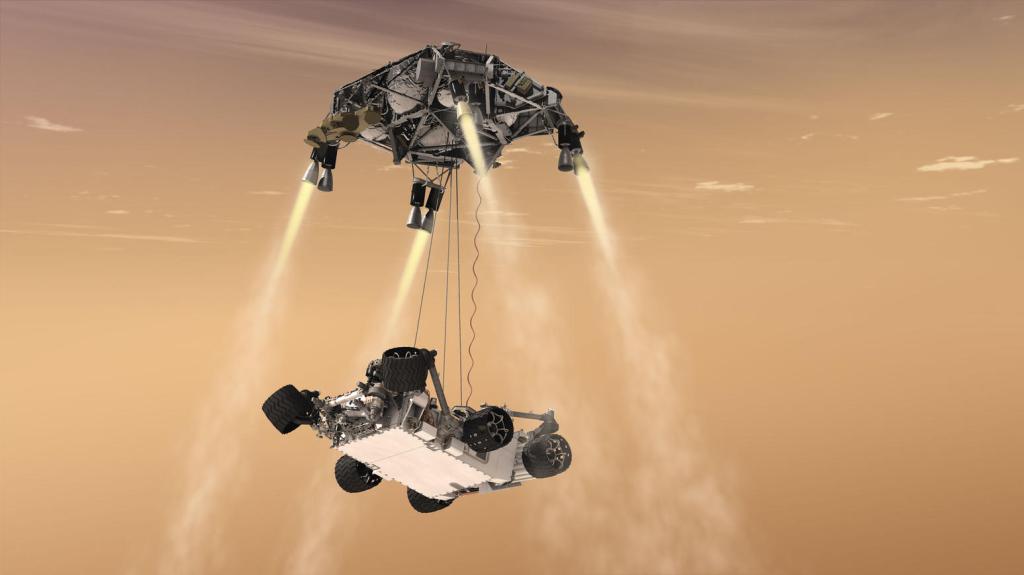
Here’s How Curiosity’s Sky Crane Changed the Way NASA Explores Mars
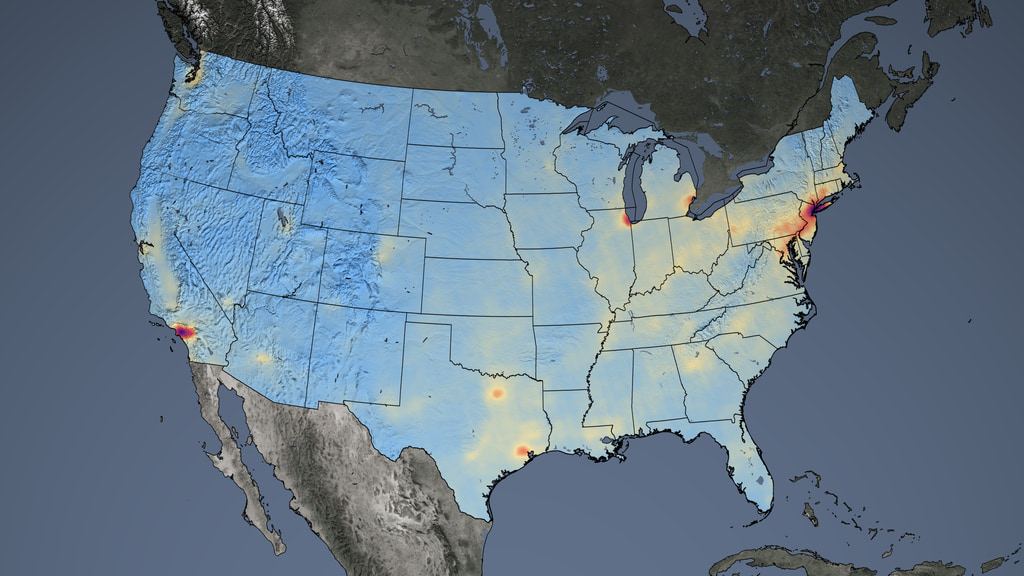
NASA, EPA Tackle NO2 Air Pollution in Overburdened Communities
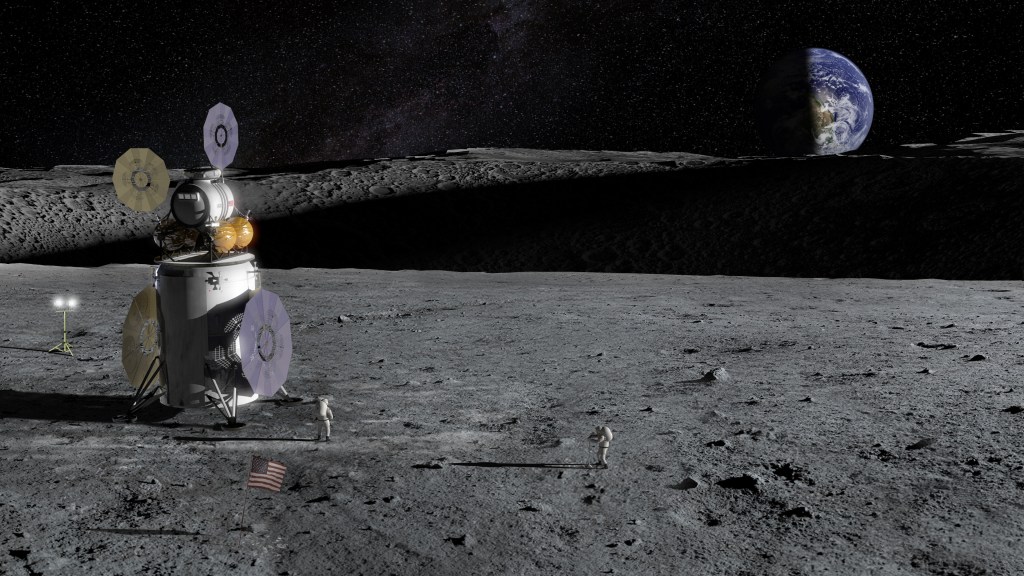
NASA Optical Navigation Tech Could Streamline Planetary Exploration
- Search All NASA Missions
- A to Z List of Missions
- Upcoming Launches and Landings
- Spaceships and Rockets
- Communicating with Missions
- James Webb Space Telescope
- Hubble Space Telescope
- Why Go to Space
- Commercial Space
- Destinations
- Living in Space
- Explore Earth Science
- Earth, Our Planet
- Earth Science in Action
- Earth Multimedia
- Earth Science Researchers
- Pluto & Dwarf Planets
- Asteroids, Comets & Meteors
- The Kuiper Belt
- The Oort Cloud
- Skywatching
- The Search for Life in the Universe
- Black Holes
- The Big Bang
- Dark Energy & Dark Matter
- Earth Science
- Planetary Science
- Astrophysics & Space Science
- The Sun & Heliophysics
- Biological & Physical Sciences
- Lunar Science
- Citizen Science
- Astromaterials
- Aeronautics Research
- Human Space Travel Research
- Science in the Air
- NASA Aircraft
- Flight Innovation
- Supersonic Flight
- Air Traffic Solutions
- Green Aviation Tech
- Drones & You
- Technology Transfer & Spinoffs
- Space Travel Technology
- Technology Living in Space
- Manufacturing and Materials
- Science Instruments
- For Kids and Students
- For Educators
- For Colleges and Universities
- For Professionals
- Science for Everyone
- Requests for Exhibits, Artifacts, or Speakers
- STEM Engagement at NASA
- NASA's Impacts
- Centers and Facilities
- Directorates
- Organizations
- People of NASA
- Internships
- Our History
- Doing Business with NASA
- Get Involved
NASA en Español
- Aeronáutica
- Ciencias Terrestres
- Sistema Solar
- All NASA News
- Video Series on NASA+
- Newsletters
- Social Media
- Media Resources
- Upcoming Launches & Landings
- Virtual Events
- Sounds and Ringtones
- Interactives
- STEM Multimedia

NASA Teams Change Brakes to Keep Artemis Crew Safe
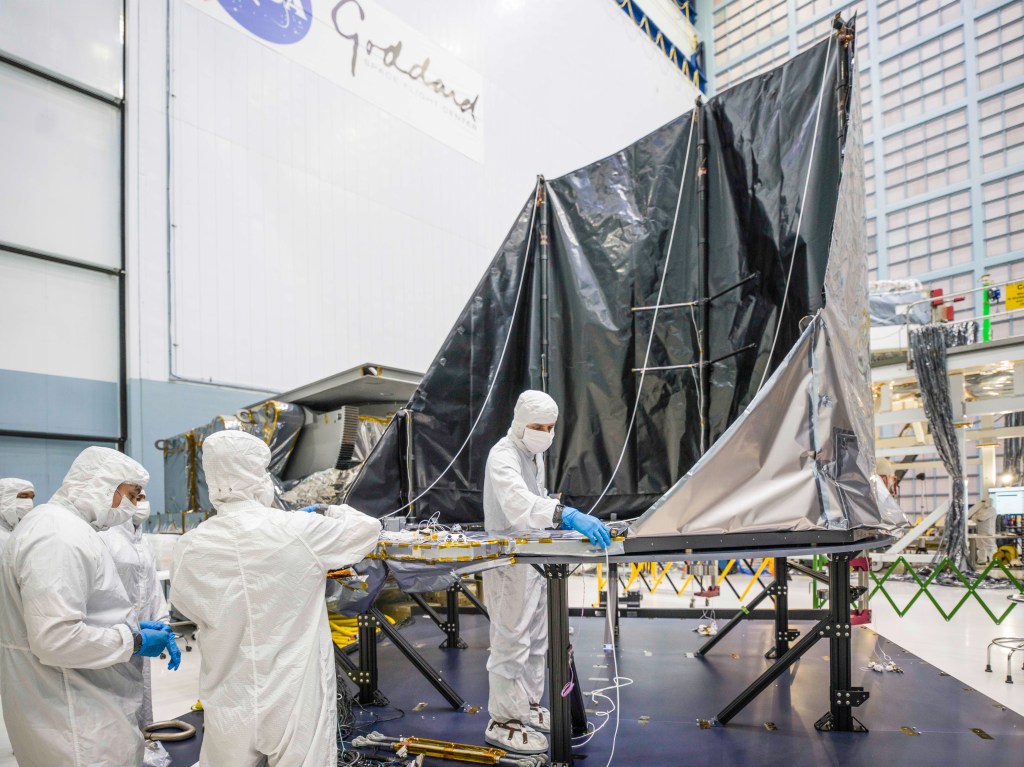
NASA Tests Deployment of Roman Space Telescope’s ‘Visor’

Artemis Emergency Egress System Emphasizes Crew Safety
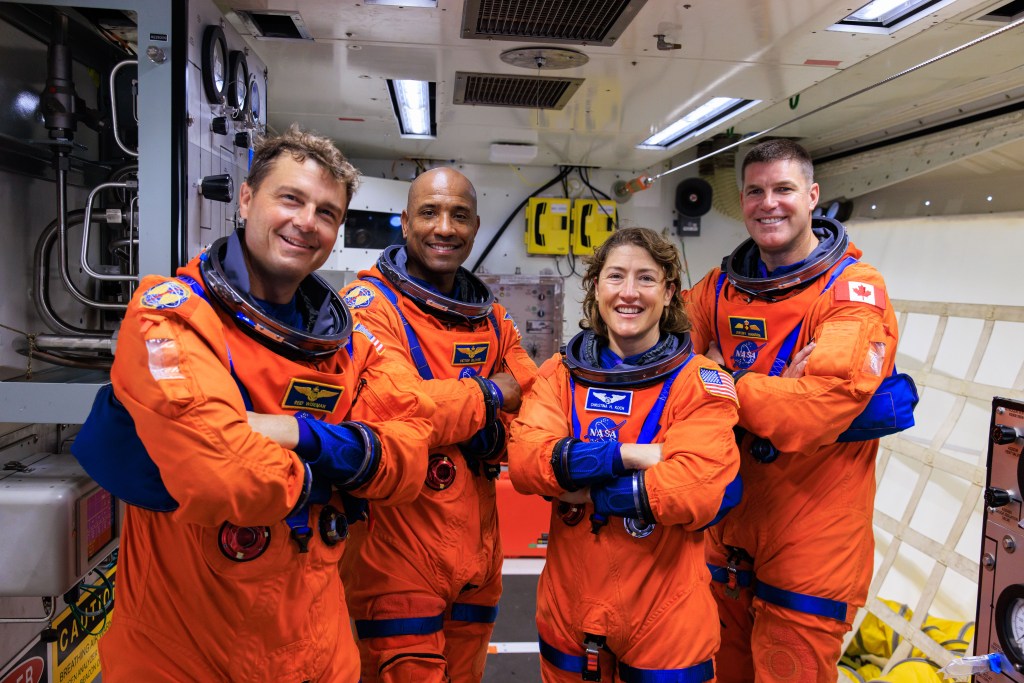
What’s New With the Artemis II Crew
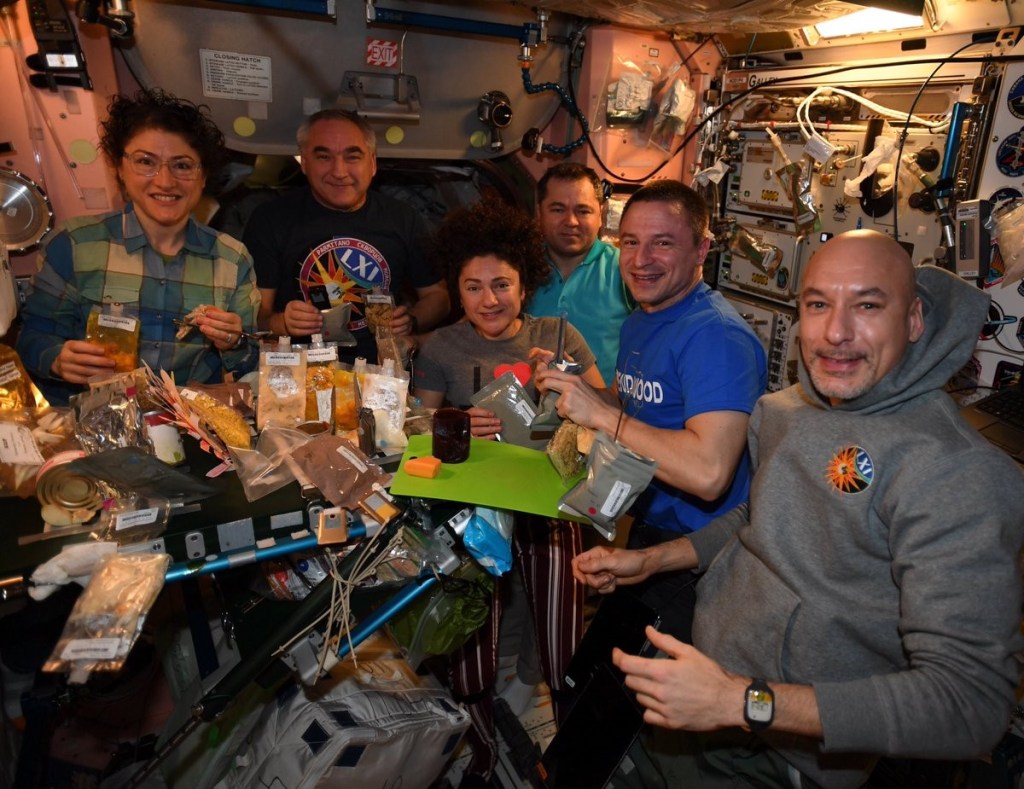
Food in Space

NASA Aircraft Gathers 150 Hours of Data to Better Understand Earth

Tundra Vegetation to Grow Taller, Greener Through 2100, NASA Study Finds
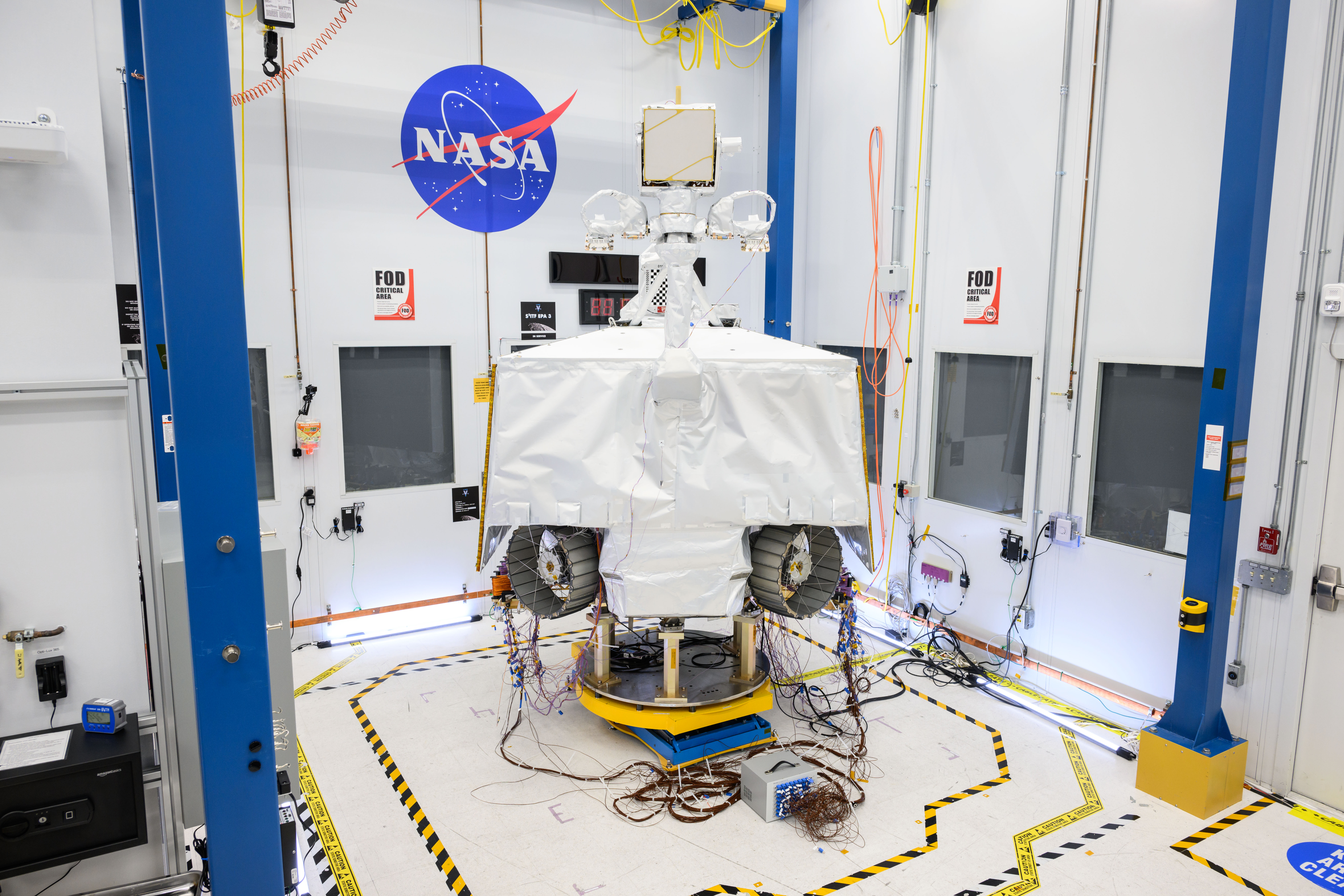
NASA Explores Industry, Partner Interest in Using VIPER Moon Rover
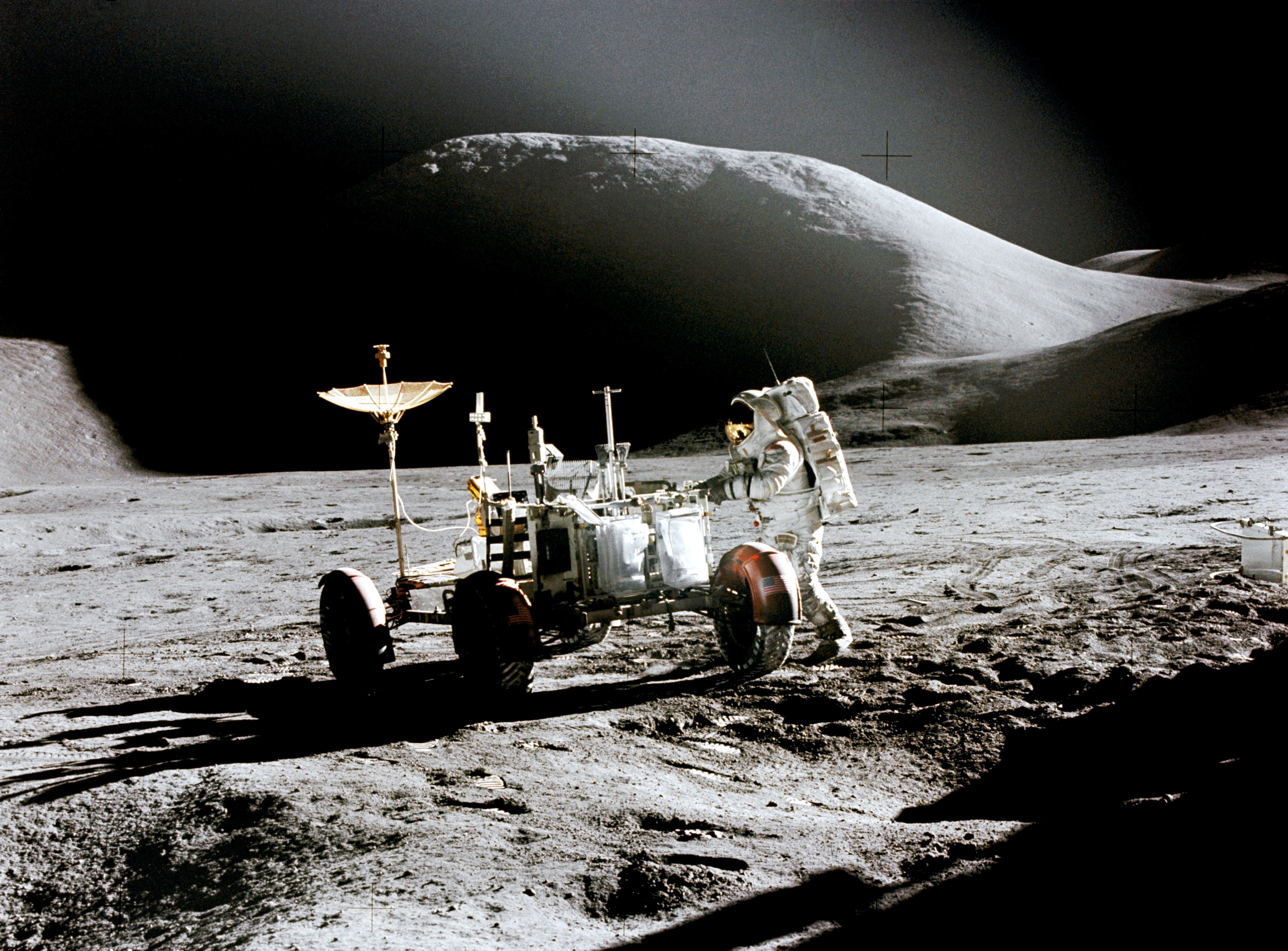
Amendment 41: DRAFT F.13 Lunar Terrain Vehicle Instruments Program Released for Community Comment.

Regina Caputo Charts the Future of High-Energy Astrophysics
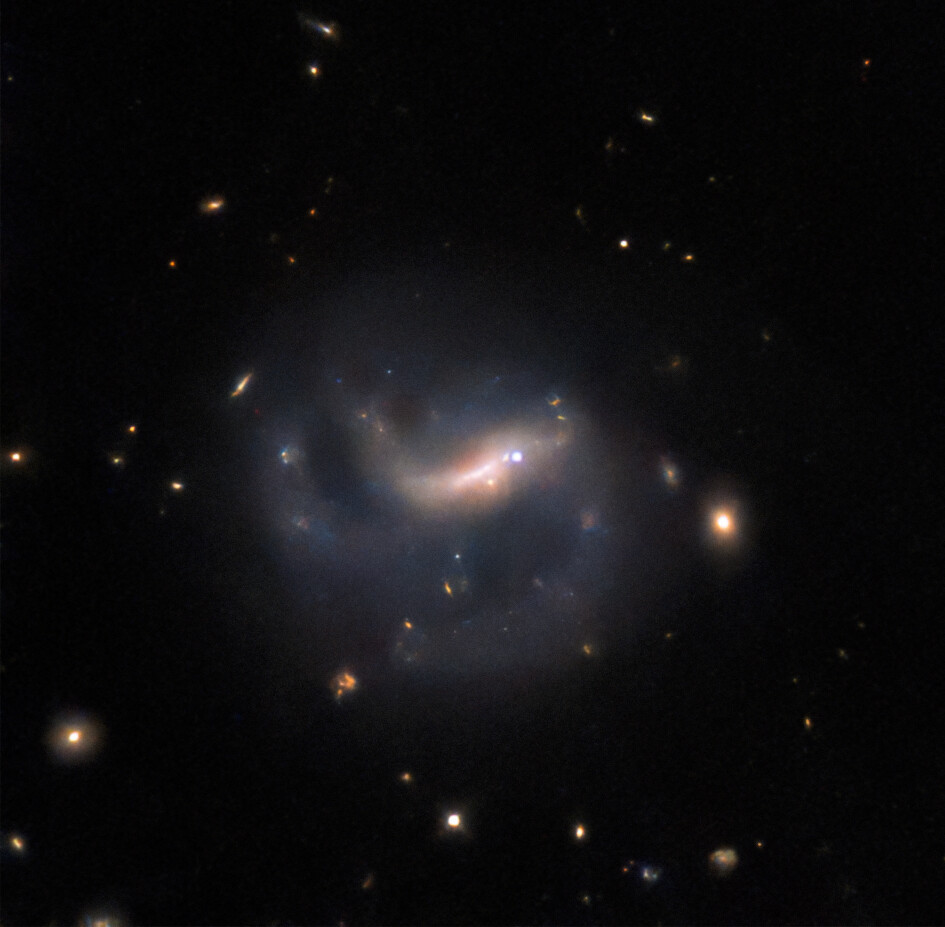
Hubble Spotlights a Supernova
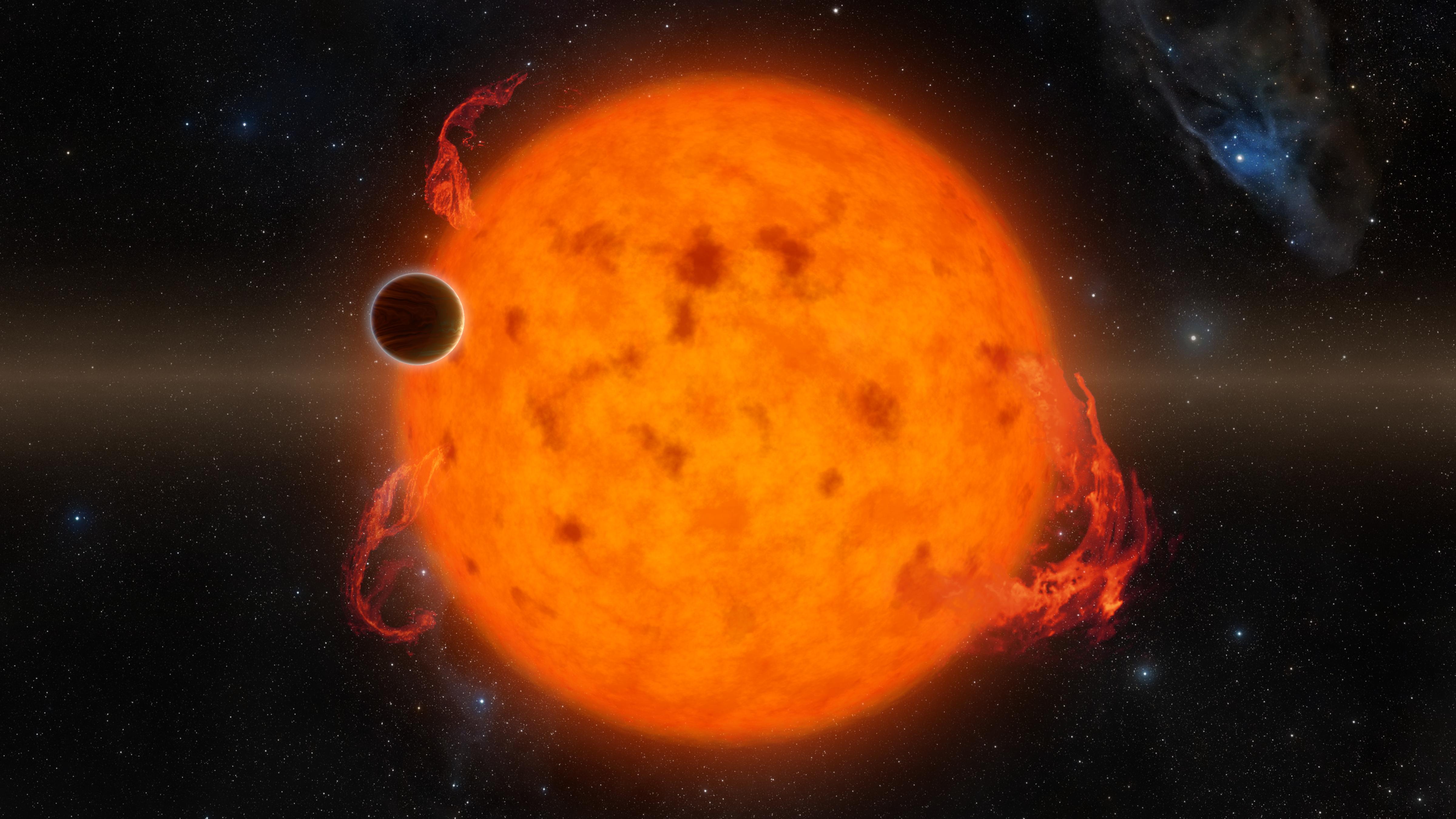
How NASA Citizen Science Fuels Future Exoplanet Research
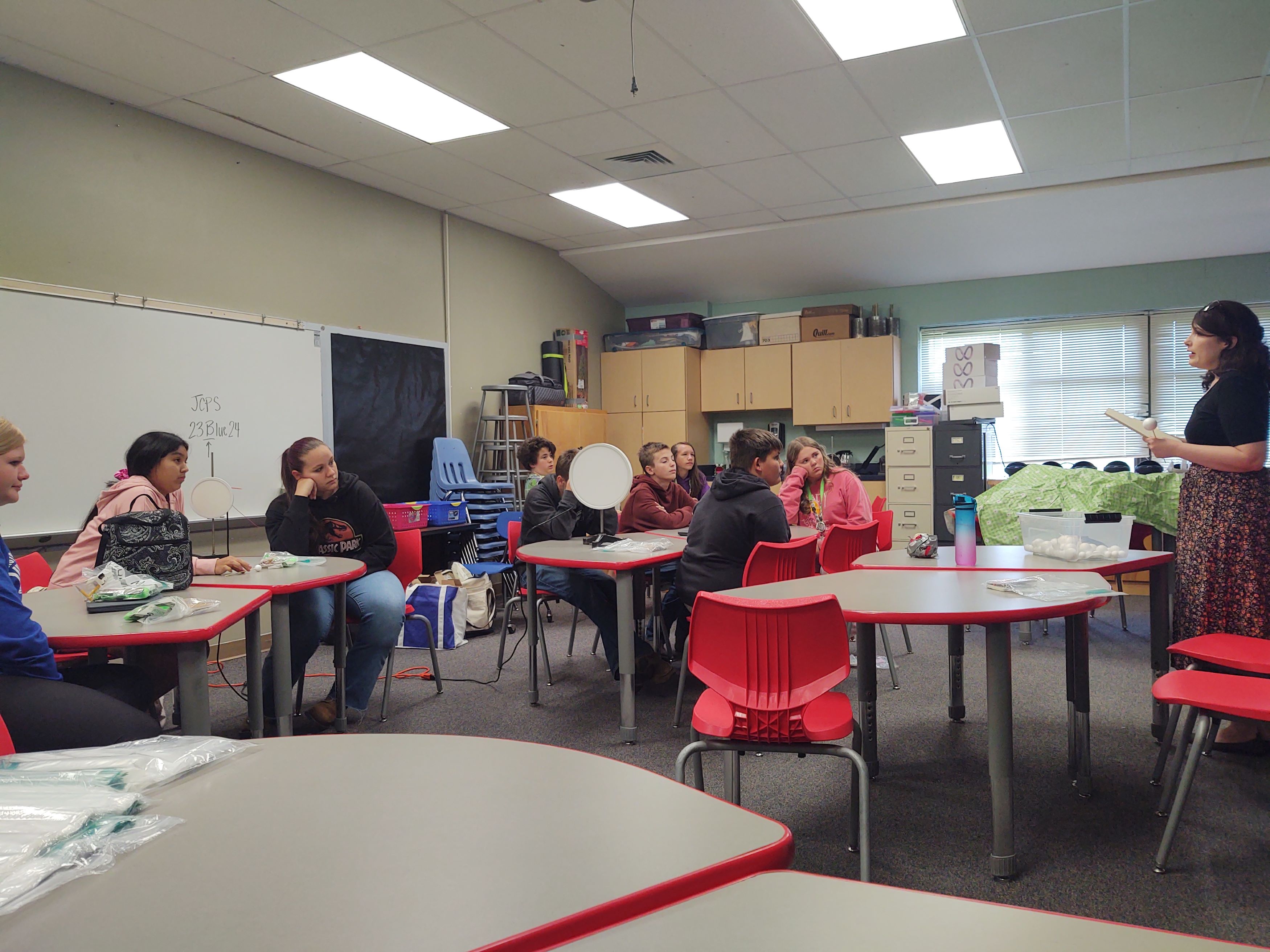
Astro Campers SCoPE Out New Worlds
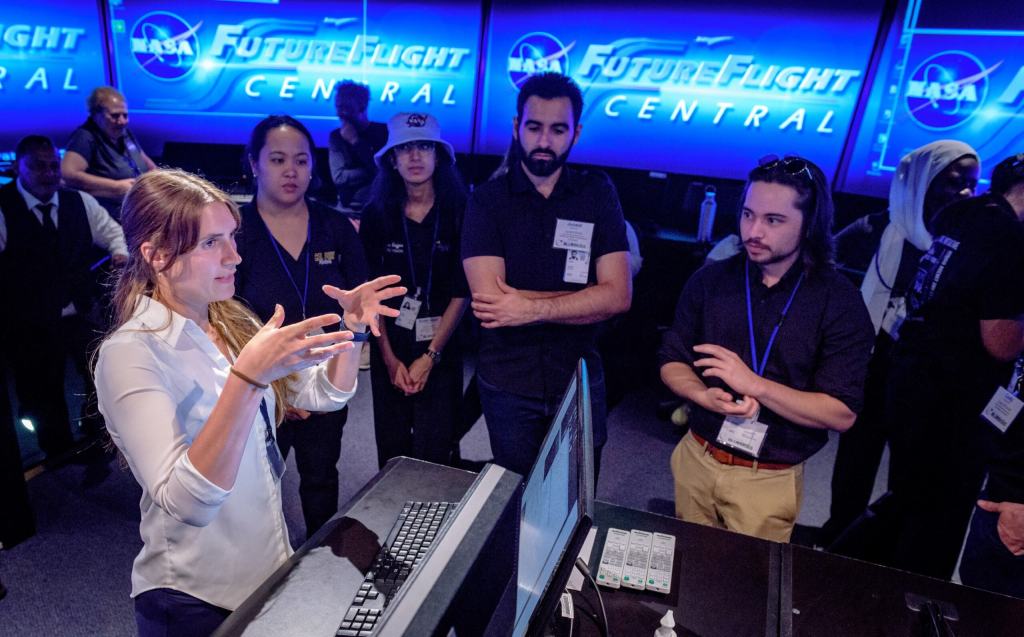
Collegiate Teams to Focus on Aviation Solutions for Agriculture in 2025 Gateways to Blue Skies Competition
‘current’ events: nasa and usgs find a new way to measure river flows.
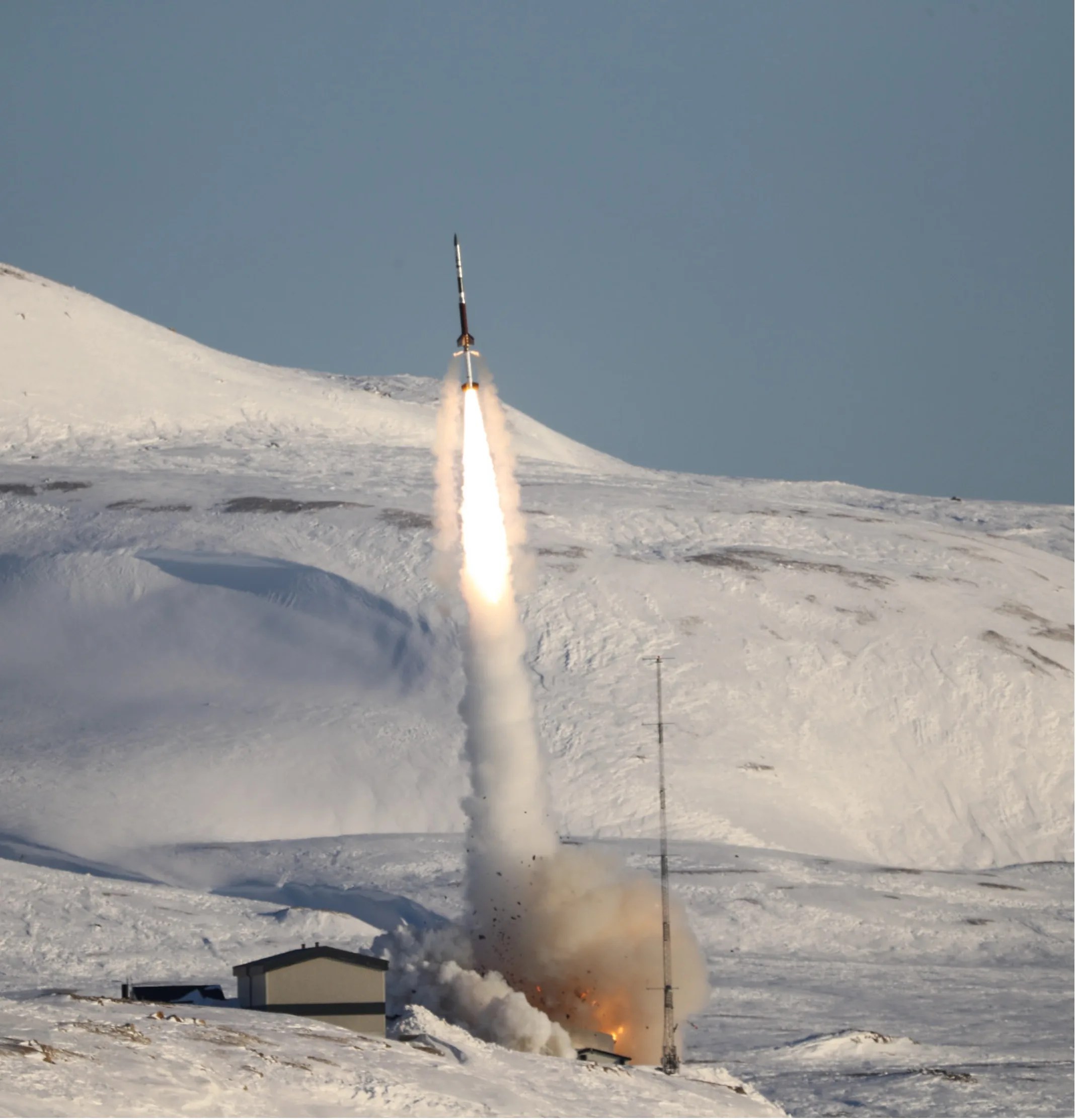
Amendment 39: B.9 Heliophysics Low Cost Access to Space Proposal Due Date Delay

How Do I Navigate NASA Learning Resources and Opportunities?

This Rocks! NASA is Sending Student Science to Space
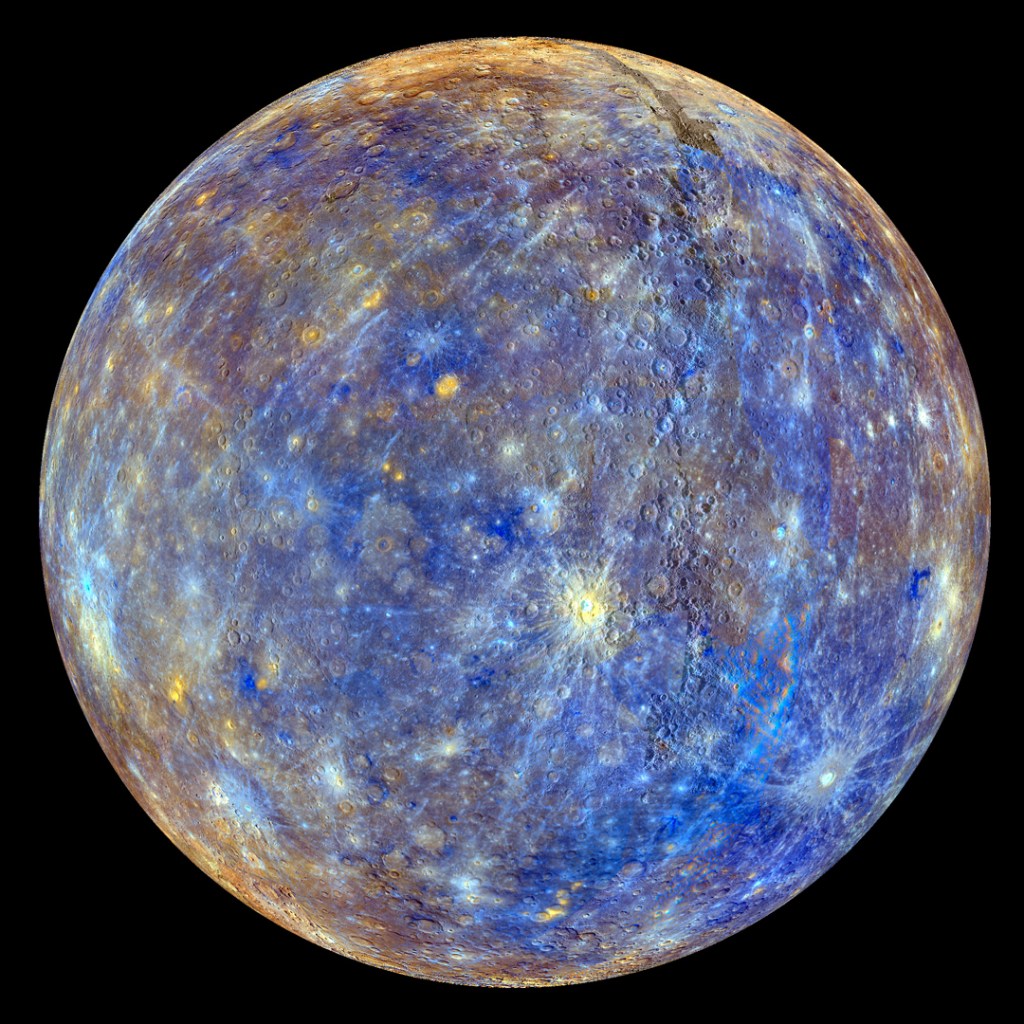
MESSENGER – From Setbacks to Success
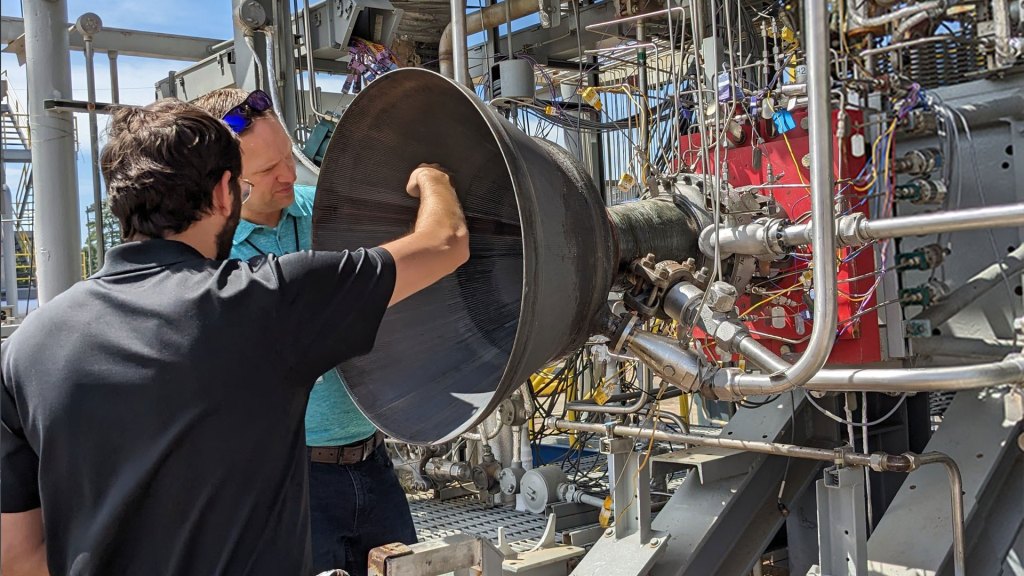
NASA Additive Manufacturing Project Shapes Future for Agency, Industry Rocket Makers
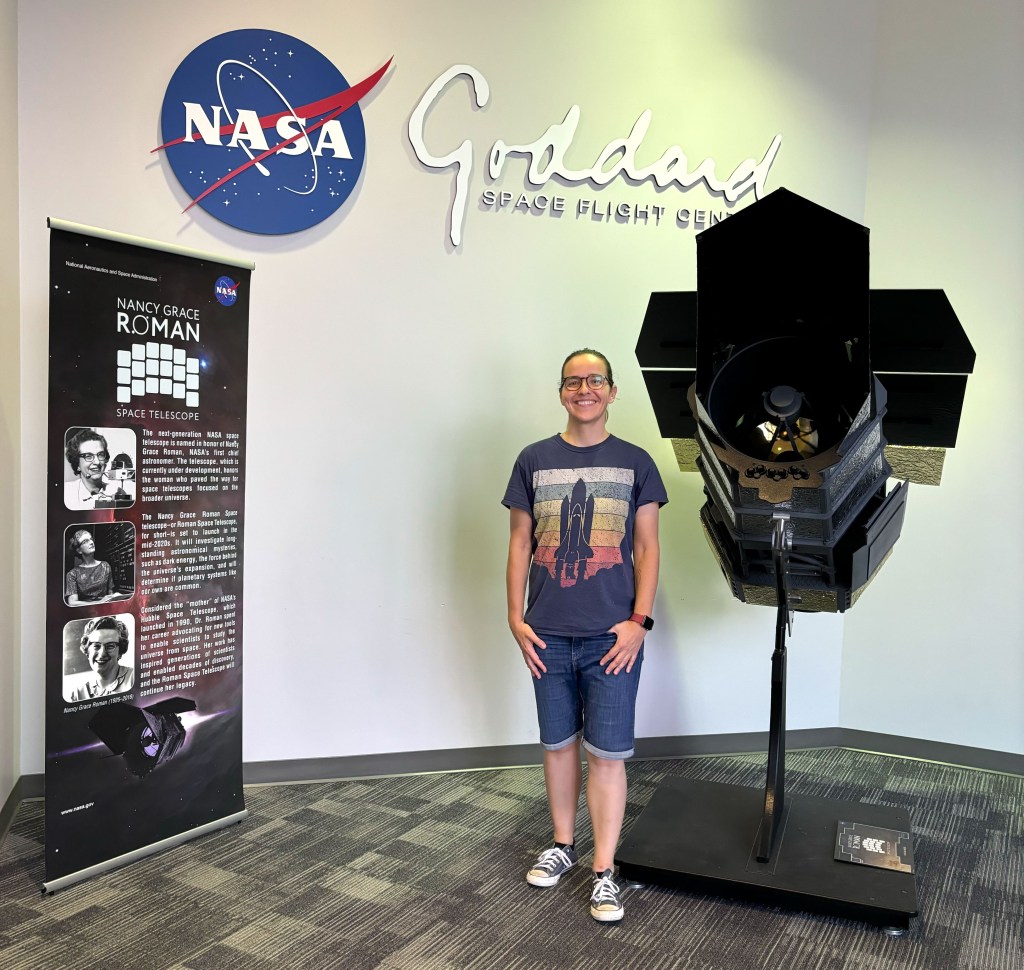

There Are No Imaginary Boundaries for Dr. Ariadna Farrés-Basiana

Astronauta de la NASA Frank Rubio

Diez maneras en que los estudiantes pueden prepararse para ser astronautas
Three ways to travel at (nearly) the speed of light.

Katy Mersmann
1) electromagnetic fields, 2) magnetic explosions, 3) wave-particle interactions.
One hundred years ago today, on May 29, 1919, measurements of a solar eclipse offered verification for Einstein’s theory of general relativity. Even before that, Einstein had developed the theory of special relativity, which revolutionized the way we understand light. To this day, it provides guidance on understanding how particles move through space — a key area of research to keep spacecraft and astronauts safe from radiation.
The theory of special relativity showed that particles of light, photons, travel through a vacuum at a constant pace of 670,616,629 miles per hour — a speed that’s immensely difficult to achieve and impossible to surpass in that environment. Yet all across space, from black holes to our near-Earth environment, particles are, in fact, being accelerated to incredible speeds, some even reaching 99.9% the speed of light.
One of NASA’s jobs is to better understand how these particles are accelerated. Studying these superfast, or relativistic, particles can ultimately help protect missions exploring the solar system, traveling to the Moon, and they can teach us more about our galactic neighborhood: A well-aimed near-light-speed particle can trip onboard electronics and too many at once could have negative radiation effects on space-faring astronauts as they travel to the Moon — or beyond.
Here are three ways that acceleration happens.
Most of the processes that accelerate particles to relativistic speeds work with electromagnetic fields — the same force that keeps magnets on your fridge. The two components, electric and magnetic fields, like two sides of the same coin, work together to whisk particles at relativistic speeds throughout the universe.
In essence, electromagnetic fields accelerate charged particles because the particles feel a force in an electromagnetic field that pushes them along, similar to how gravity pulls at objects with mass. In the right conditions, electromagnetic fields can accelerate particles at near-light-speed.
On Earth, electric fields are often specifically harnessed on smaller scales to speed up particles in laboratories. Particle accelerators, like the Large Hadron Collider and Fermilab, use pulsed electromagnetic fields to accelerate charged particles up to 99.99999896% the speed of light. At these speeds, the particles can be smashed together to produce collisions with immense amounts of energy. This allows scientists to look for elementary particles and understand what the universe was like in the very first fractions of a second after the Big Bang.
Download related video from NASA Goddard’s Scientific Visualization Studio
Magnetic fields are everywhere in space, encircling Earth and spanning the solar system. They even guide charged particles moving through space, which spiral around the fields.
When these magnetic fields run into each other, they can become tangled. When the tension between the crossed lines becomes too great, the lines explosively snap and realign in a process known as magnetic reconnection. The rapid change in a region’s magnetic field creates electric fields, which causes all the attendant charged particles to be flung away at high speeds. Scientists suspect magnetic reconnection is one way that particles — for example, the solar wind, which is the constant stream of charged particles from the Sun — is accelerated to relativistic speeds.
Those speedy particles also create a variety of side-effects near planets. Magnetic reconnection occurs close to us at points where the Sun’s magnetic field pushes against Earth’s magnetosphere — its protective magnetic environment. When magnetic reconnection occurs on the side of Earth facing away from the Sun, the particles can be hurled into Earth’s upper atmosphere where they spark the auroras. Magnetic reconnection is also thought to be responsible around other planets like Jupiter and Saturn, though in slightly different ways.
NASA’s Magnetospheric Multiscale spacecraft were designed and built to focus on understanding all aspects of magnetic reconnection. Using four identical spacecraft, the mission flies around Earth to catch magnetic reconnection in action. The results of the analyzed data can help scientists understand particle acceleration at relativistic speeds around Earth and across the universe.
Particles can be accelerated by interactions with electromagnetic waves, called wave-particle interactions. When electromagnetic waves collide, their fields can become compressed. Charged particles bouncing back and forth between the waves can gain energy similar to a ball bouncing between two merging walls.
These types of interactions are constantly occurring in near-Earth space and are responsible for accelerating particles to speeds that can damage electronics on spacecraft and satellites in space. NASA missions, like the Van Allen Probes , help scientists understand wave-particle interactions.
Wave-particle interactions are also thought to be responsible for accelerating some cosmic rays that originate outside our solar system. After a supernova explosion, a hot, dense shell of compressed gas called a blast wave is ejected away from the stellar core. Filled with magnetic fields and charged particles, wave-particle interactions in these bubbles can launch high-energy cosmic rays at 99.6% the speed of light. Wave-particle interactions may also be partially responsible for accelerating the solar wind and cosmic rays from the Sun.
Download this and related videos in HD formats from NASA Goddard’s Scientific Visualization Studio
By Mara Johnson-Groh NASA’s Goddard Space Flight Center , Greenbelt, Md.

We use cookies to give you the best possible experience. By continuing to use our site, you accept our Privacy Policy .
Wandering Witch: The Journey of Elaina 14
Author: Jougi Shiraishi
Artist: Azure
Translated by: Nicole Wilder
IT'S NOT ABOUT THE DESTINATION...
It’s impossible to predict who Elaina will meet on each leg of her journey, but one thing is always certain: With every new encounter, adventure is never far behind! She’ll cross paths with a money-hungry beauty, a man who smiles in the face of death, a troubled slaver and his ex-girlfriend, an undercover detective, a very fluffy witch, and another witch with horrible communication skills. Perhaps one day our Wandering Witch will even happen upon someone who doesn’t have a problem for her to solve!

Wandering Witch: The Journey of Elaina, Vol. 13 (light novel)
Wandering Witch: The Journey of Elaina Volumes

Wandering Witch: The Journey of Elaina, Vol. 14 (light novel)

Wandering Witch: The Journey of Elaina, Vol. 12 (light novel)

Wandering Witch: The Journey of Elaina, Vol. 11 (light novel)

Wandering Witch: The Journey of Elaina, Vol. 10 (light novel)

Wandering Witch: The Journey of Elaina, Vol. 9 (light novel)

Wandering Witch: The Journey of Elaina, Vol. 8 (light novel)

Wandering Witch: The Journey of Elaina, Vol. 7 (light novel)

Wandering Witch: The Journey of Elaina, Vol. 6 (light novel)

Wandering Witch: The Journey of Elaina, Vol. 5 (light novel)

Wandering Witch: The Journey of Elaina, Vol. 4 (light novel)

Wandering Witch: The Journey of Elaina, Vol. 3 (light novel)

Wandering Witch: The Journey of Elaina, Vol. 2 (light novel)

Wandering Witch: The Journey of Elaina, Vol. 1 (light novel)
back to top

Posted Jul 09, 2024 by Callista Gonzalez
Anime Expo 2024 Recap
Thanks for joining us at Anime Expo this year! If you weren't able to attend our Industry Panel, here's a recap of all the wonderful new titles joining our lineup.
Related Series

Riviere and the Land of Prayer (light novel)

Get the latest news
You will never miss updates if you subscribe to our newsletter.
Physics Fox
A Light Introduction
Sankey diagrams how....
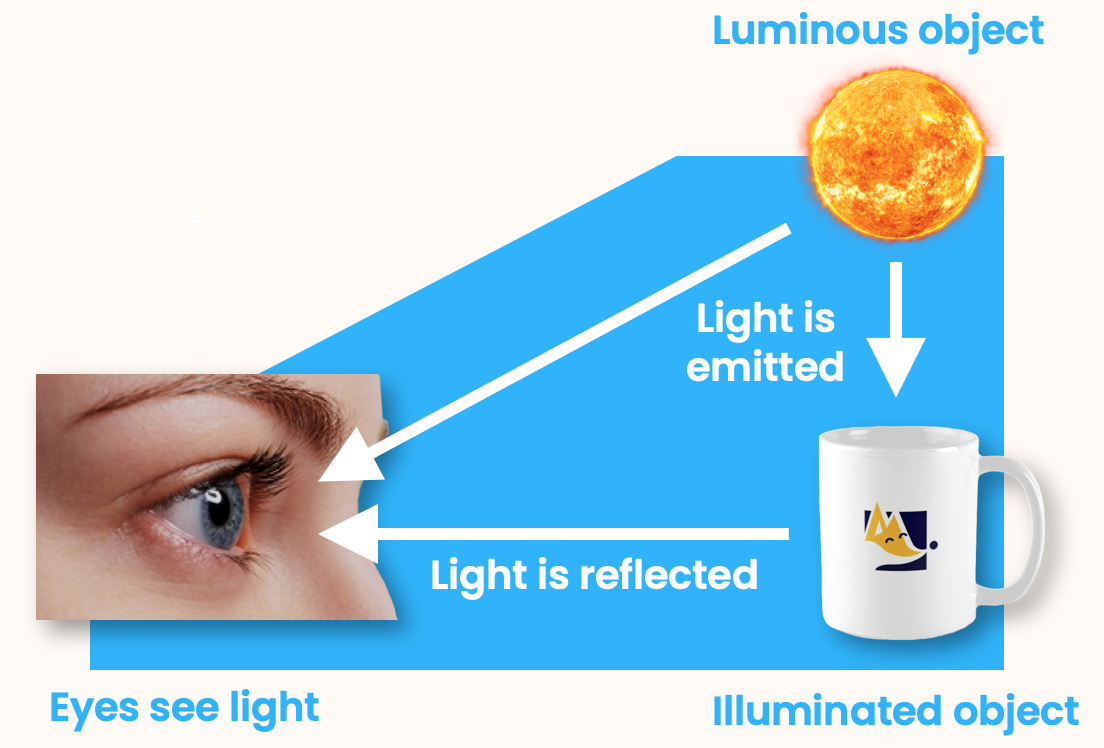
Seeing things
I'll look at the sun, and I'll look in the mirror I'm on the right track, yeah I'm onto a winner

What makes more sense is that there is something that goes into our eyes. We'll call this thing light . The sun creates light, so when the sun is out we can we can see the light from it, as well as light from the sun that has bounced off other objects. (The scientific word for 'bounce' is reflect ).
Luminous vs Illuminated
Light is created by some objects, and reflected from other objects. There's a special name we use for each of these types; luminous and illuminated .
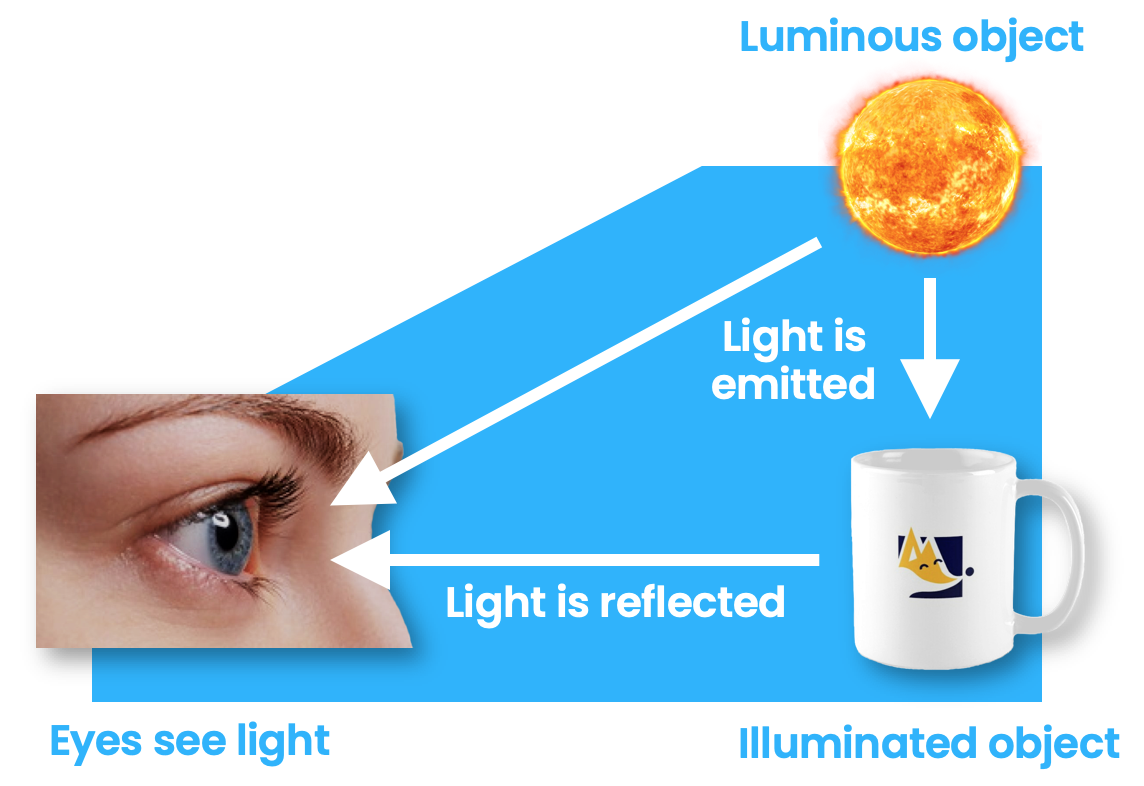
Luminous objects emit (aka. create) light. Illuminated objects reflect light.
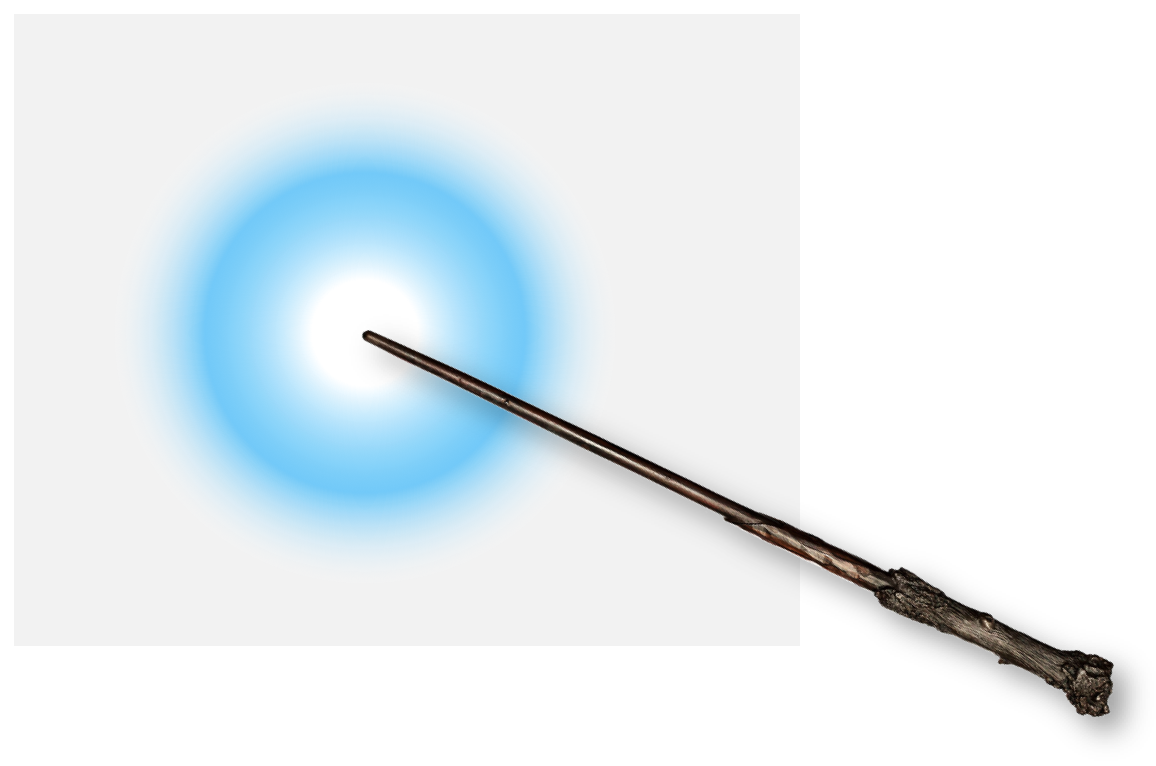
Interactions of Light
Let's summarise the journey light takes to our eyes (from any illuminated object):
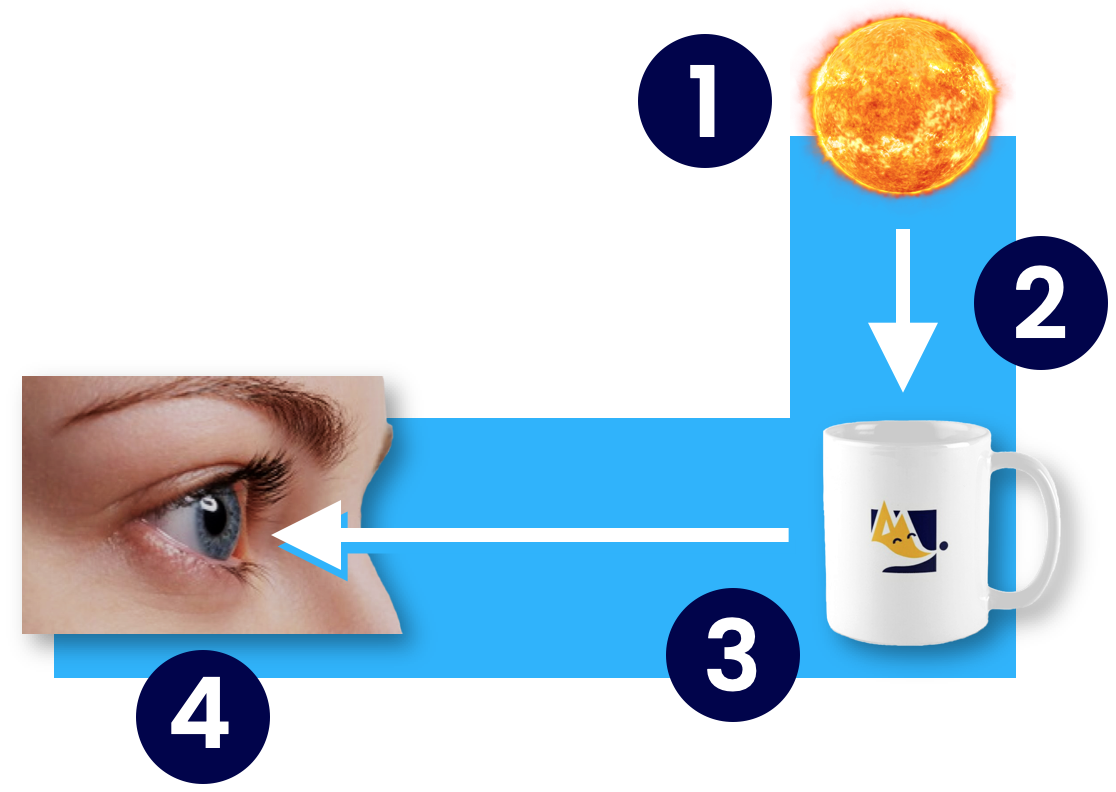
- Light is created by a luminous object
- Light travels through space
- Light is reflected off an illuminated object
- Light is detected by our eyes (after travelling through space again)
Over the next set of pages, we will understand what happens during steps 2-4 . Step 1 is quite complex (and there are many ways it's done), so we'll cover that another time.
Is glow-in-the-dark stuff luminous or illuminated?

It's both !
Glow-in-the-dark objects are luminous because they always emit light, but it's such a small amount of light that you can only see it in dark room (hence the name: glow-in-the-dark ).
In a bright room, a glow-in-the-dark object reflects light just like any other illuminated object would, so it is also illuminated .
Congratulations!
7 of 7 questions completed
+ ⭐️ collected.
Sign up (for free!) to:
• save your progress 📊 • create constellations✨ • customise your fox! 🦊
Forgot your Password?
- You can change your display name at any time.
- at least 1 letter
- at least 1 number
- at least 8 characters
- password and confirmation match
Lost your password? Please enter your email address. You will receive a link to create a new password.
Email Error message here!
Back to log-in
Physics Fox ™
Leaderboard
Fundamentals, forces & motion, electricity, space, etc..
Physics Fox is in beta ! Find out more

🚧 Under construction 🚧
- Solid vs Liquid vs Gas
- Internal Energy
- Brownian Motion
- Heat Transfer: Conduction, Convection, Radiation
- Energy in the Home
- What are Waves?
- Time Period and Frequency
- Transverse vs Longitudinal Waves
- A Sound Introduction
- How Sound moves through Materials
- Echoes Echoes Echoes
- Frequency of Sound
- How your Ears Work
- Uses of Sound & Ultrasound
- The Electromagnetic Spectrum
- EM Spectrum: Uses and Dangers
- Specular & Diffuse Reflection
- Convex & Concave Mirrors
- Refraction (Intro)
- Convex & Concave Lenses
- Dispersion in Prisms
- Interference & Superposition
- Balanced Moments
- Simple Machines
- Pressure (Intro)
- Pressure in Liquids
- Atmospheric Pressure
- Hooke's Law
- Equilibrium
- Distance-Time Graphs
- Relative Motion
- Cells & Batteries
- Resistance & Resistors
- Ohm's Law
- Summary of Circuits 2
- Separated Charge 2: Electric Boogaloo
- Electrical Components: Motors, diodes, thermistors
- I-V Plots (Bulb, resistor, wire, diode)
- Magnetic Materials
- Magnetic Field of Many Magnets
- Soft & Hard Magnetic Materials
- Electromagnets (Intro)
- Gravitational Force (Again!)
- Earth's Tilt & the Seasons
- Lunar Eclipses
- Solar Eclipses
- The Life Cycle of a Star
User Settings

Uncovering How a Microscope Light Travels – A Comprehensive Guide
Michael Oliver Barlow
Updated on: 05.03.2023
The world we see around us is full of intricate details, but there are some things that are too small to observe with our naked eye. That is where microscopes come in – these powerful tools allow us to magnify objects, bringing tiny particles into focus. But have you ever wondered how a microscope light travels through the microscope and onto the sample? In this article, we will delve into the fascinating journey of light through magnification, exploring how a microscope light travels and the physics behind it.
Analyzing the Journey of Light Through a Microscope
How Light Travels Through a Microscope
Light travels from the source, usually an LED or halogen light, and passes through a condenser lens located beneath the stage. The condenser lens concentrates the light and directs it towards the sample, allowing for optimal illumination while reducing glare. The objective lens located near the specimen collects the light and magnifies the image. The magnified image is then projected upward and into the ocular lens or eyepiece, which serves as a second magnifier.
How Light Reaches the Eye
After passing through the ocular lens, the magnified image is projected onto the retina at the back of the eye, thanks to the refractive properties of the lens. The retina contains light-sensitive cells that convert the image into electrical impulses, which are sent to the brain for processing. This is how we are able to see a magnified image of the specimen through the microscope.
In summary, understanding how light travels through a microscope to your eye is fascinating and helps to explain the magnification process. By analyzing the journey of light through the microscope, we can appreciate the intricate ways in which light interacts with lenses to create the images we observe.
Exploring the Magnification of Light
Magnification of Light Through a Microscope
When light passes through a microscope, it follows a fascinating journey. It enters the objective lens, which works to magnify the image by projecting a larger version of it onto the eyepiece lens. The eyepiece then further magnifies this image, allowing us to see a highly magnified view of our specimen.
Understanding Magnification Levels and Powers
Magnification levels and powers refer to the degree to which the microscope can enlarge the image we see. This is determined by the combination of the objective lens and the eyepiece. The strength of the microscope’s magnification depends on the quality of the lenses and the technology used in the microscope’s construction.
Using a microscope with high magnification power can provide a detailed view of our specimen, allowing us to scrutinize the smallest details with accuracy. However, it’s important to note that too high of a magnification level can cause distortion and make it difficult to clearly see the object of study.
In conclusion, the magnification of light through a microscope is a fascinating process that allows us to observe the tiniest details of our specimens. Understanding the magnification levels and power is crucial when selecting a microscope for scientific or research purposes.
Illuminating the Impact of Different Microscope Components
Analyzing the Role of an Objective Lens
The objective lens is one of the most critical components of a microscope. It collects the light that travels through the specimen and magnifies it to produce an enlarged image. A higher magnification power of the objective lens results in a more in-depth and detailed image. Hence, it is crucial to select an objective lens with the appropriate magnification power for the desired level of magnification.
Examining the Importance of an Eyepiece Lens
The eyepiece lens, also known as the ocular lens, is the lens that the viewer looks through to see the magnified image. It further magnifies the image produced by the objective lens, producing a more detailed and clear picture. It is essential to have an appropriate eyepiece lens for the microscope to produce a clear and high-quality image.
Investigating the Impact of the Illumination System
The illumination system is critical in producing a clear and detailed image. It provides the light source necessary to illuminate the specimen, improving the contrast and making it easier to see the details. It is essential to adjust the intensity and angle of the light appropriately to enhance the image quality.
In conclusion, an appropriately selected objective lens, eyepiece lens, and illumination system are vital for the success of a microscope. Choosing the correct components and adjusting them correctly will result in the production of clear, detailed, and high-quality images for study and analysis.
Examining the Benefits of Microscope Light
- Improved Resolution: One of the key benefits of microscope light is an improved resolution. With the use of microscope light, the samples can be illuminated, leading to better resolution and detail, especially in the case of low contrast or translucent samples.
- Enhanced Contrast: Microscope light also helps to enhance contrast when observing biological samples. Different types of light (brightfield, phase contrast, darkfield, and fluorescence) can be used, depending on the nature of the sample and the information required to be extracted.
- Better Visualization: Microscope light can help researchers to visualize the structure, morphology, and behavior of cells and microorganisms under observation. This can facilitate a better understanding of complex biological systems and processes.
- Live Cell Imaging: With the use of microscope light, it is possible to observe the behavior and movement of live cells, in real-time. This allows researchers to make better observations and gather more accurate data about the behavior of cells under different conditions.
- Digital Imaging: The use of microscope light allows the acquisition of digital images of samples, which can be stored, manipulated, and analyzed with the help of software. This can aid in the creation of accurate and detailed data, which can be used for further analysis and experimentation.
- Non-destructive Imaging: Microscope light is non-destructive, meaning that samples can be observed and analyzed without being damaged or altered. This makes it possible to observe the same sample repeatedly, over an extended period.
- Multiple Applications: Microscope light has a wide range of applications, including research in biology, medicine, chemistry, and materials science. It can also be used in industry, such as in quality control, product development, and manufacturing.
In conclusion, the use of microscope light has several benefits, including improved resolution, enhanced contrast, better visualization, live cell imaging, digital imaging, non-destructive imaging, and multiple applications. By using different types of light, researchers can gather valuable information about the structure, behavior, and characteristics of samples, leading to a better understanding of complex biological systems and processes.
Frequently Asked Questions
What is the maximum magnification achievable with a microscope.
The maximum magnification achievable with a microscope is limited by the resolving power of the lens. This means that the highest magnification possible is when the lens can distinguish two points that are the closest together. However, there are various factors that can affect the maximum magnification, such as the quality of the lens, the type of microscope and the wavelength of the light used. Typically, the maximum magnification achievable with a compound microscope is around 2000x, while a high-powered electron microscope can go as high as 50 million times magnification.
How does a microscope focus light?
A microscope focuses light using a combination of lenses. The objective lens or lenses gather and magnify the light from the specimen, while the eyepiece lens further magnifies the image and brings it into focus for the observer. The distance between these lenses is adjusted using the fine and coarse focus knobs to sharpen the image. Additionally, some microscopes use other mechanisms, like the condenser, to manipulate the light before it enters the objective lens. It may seem simple, but the precise arrangement and alignment of these lenses and mechanisms are critical for producing a clear and accurate image through magnification.
Are all microscopes equipped with a light source?
No, not all microscopes are equipped with a light source. However, microscopes that are used in laboratories and academic institutions are typically equipped with a light source. A light source is essential for magnifying objects at high levels of resolution for better visibility. Microscopes without a light source, such as electron microscopes, use other means of illumination, such as electron beams. However, all types of microscopes utilize the principles of optics, including reflection, refraction, and absorption, to manipulate and magnify light in order to visualize objects at an extremely high level of detail.
How does the light source affect the image quality?
The light source is one of the most important aspects of a microscope as it plays a crucial role in the quality of an image. The characteristics of the light source, such as its intensity, direction, and color temperature, all have an impact on the resulting image.
A bright and even light source is necessary for producing clear and accurate images. A poorly lit sample may result in blurry or low-contrast images, which can hinder accurate analysis. Additionally, the direction of the light source affects the angle of illumination and can increase the visibility of certain features of a sample.
The color temperature of the light source can also greatly impact the image quality. Different samples require different variations of color temperature, and a mismatched color temperature can result in color distortion, making it difficult to accurately identify specific characteristics of a sample.
In summary, the light source is a critical component of a microscope and significantly impacts the resulting image quality. For optimal results, the light source must be bright, even, and appropriately matched to the sample’s color requirements.
What is the difference between reflected and transmitted light microscopes?
Reflected light microscopes, as the name suggests, use light that is reflected off a specimen to create an image. This type of microscope is commonly used in metallurgy and mineralogy to observe opaque or reflective materials.
On the other hand, transmitted light microscopes use light that passes through a specimen to create an image. This type of microscope is commonly used in biology and medical sciences to observe transparent or translucent materials.
While both types of microscopes use light to create an image, the way in which the light interacts with the specimen is different, resulting in distinct advantages and limitations for each type.
Light is an essential part of studying the world around us. By understanding how light travels through a microscope, we can further explore the fascinating journey of light through magnification. This knowledge can help us observe and understand the smallest details of our natural world, allowing us to uncover secrets that remain hidden to the naked eye.
- Microscope Master: How a Microscope Light Travels
- Microscopy U: The Light Path of the Microscope
About Michael Oliver Barlow
Leave a comment cancel reply.
Save my name, email, and website in this browser for the next time I comment.
most recent
Microscope Techniques , Optical Microscopes
How to find tiny meteorites under a microscope: an easy guide to microscopic exploration.
Electron Microscopes , Specimens for Microscopy , Types of Microscopes
Discover what plasma looks like under a microscope.
Applications of Microscopes , Specimens for Microscopy , Types of Microscopes
What does epithelial tissue look like under a microscope uncover the secrets with a microscope.
Uncover the Fascinating Details of How Big the Letter E Microscope Is
Applications of Microscopes , Electron Microscopes , Types of Microscopes
Why did they create the revolutionary electron microscope unlock the secrets of microscopy today.
Microscope Techniques , Specimens for Microscopy
How to get blood for your microscope: a step-by-step guide.
© All Optica 2024 • Privacy Policy • Terms of Use • Write for Us • Contact
Privacy Overview

Wandering Witch (Light Novel)
- Edit source
Wandering Witch: The Journey of Elaina (魔女の旅々, Majo no Tabitabi , lit. " A Witch's Journey ") is a Japanese light novel series written by Jougi Shiraishi and illustrated by Azure.
It's not about the destination...
What's your favorite story? Does it have a hero who slays a dragon and saves a princess? Or a child of prophecy destined for greatness? Well, my favorite story is a little different. It's the tale of a witch who travels the world, seeking nothing in particular. With no quest of her own, she's free to wander wherever the wind takes her, adding a few pages to the story of whomever she meets before setting off on her next adventure. At the end of her travels, the witch takes on an apprentice who will one day begin her own journey. And so the cycle continues, or so the story goes. Now, the witch who starts the story anew...who could she be?
Volumes [ ]

References [ ]
- 2 Victorica
- 3 Wandering Witch (Light Novel)
A Journey of Light Through Space and Time

This artist's animation depicts the "life" of a photon, or particle of light, as it travels across space and time, from the very early universe to the Planck satellite. By creating maps of the oldest light in the universe, Planck scientists are learning about the epic journey of light through the cosmos. The mission's maps showing this ancient light, called the cosmic microwave background, have revealed the most precise information yet about the universe's fundamental traits, such as its age, contents and the seeds of all structure, without which we would not exist.
The light's journey begins just moments after the big bang that created our universe 13.8 billion years ago. At that time, the universe was a hot plasma of electrons, protons and photons (green and red balls, and blue linear particles, respectively). The light repeatedly bounces off electrons, and as result can't travel very far. Later, about 370,000 years after the big bang, the universe cools enough for the electrons and protons to get together to form hydrogen atoms. Electrons no longer get in the way of the light, and it is free to travel.
The light passes through the "dark ages" of the universe before stars and galaxies form, then witnesses the early stages of star and galaxy formation. It travels by large clusters of galaxies, whose gravity causes the path of the light to bend. Also influencing the light's tour are electrons in hot gas trapped in galaxy clusters. These electrons once again scatter the light, but not to the degree experienced in the very early universe.
As the universe expands during this time, the energy of the photons drops, shifting to longer wavelengths. By the time the photons reach Planck, they have shifted to low-energy microwaves. In this animation, that process of shifting to lower energies, called "red-shifting" is represented by a change in color from blue to red, since blue light is higher in energy than red.
Eventually, the light reaches the Planck satellite, which orbits in a stable position called the Lagrange point, 1.5 million kilometers (930,000 miles) from Earth. Planck scans the sky continuously, picking up the glow of the ancient light all around us, creating maps like the one shown at the end of the animation behind Earth. Scientists decipher patterns in this map, which reveal clues about what our universe is made of and how it came to be.
Planck is a European Space Agency mission, with significant participation from NASA. NASA's Planck Project Office is based at NASA's Jet Propulsion Laboratory, Pasadena, Calif. JPL contributed mission-enabling technology for both of Planck's science instruments. European, Canadian and U.S. Planck scientists work together to analyze the Planck data.
More information is online at http://www.nasa.gov/planck , http://planck.caltech.edu and http://www.esa.int/planck .
Keep Exploring

Journey Of The Light - Remake
- Anime Search
- Seasonal Anime
- Recommendations
- 2024 Challenge
- Fantasy Anime League
- Manga Search
- Manga Store
Interest Stacks
- Featured Articles
- Episode Videos
- Anime Trailers
- Advertising
- MAL Supporter
Majo no Tabitabi Wandering Witch: The Journey of Elaina Edit What would you like to edit? Synopsis Background Alternative Titles Picture Chapters/Volumes Publishing Dates Relations Type External Links
Alternative titles, information, available at.

Visit MALxJapan MALxJapan -More than just anime-

More characters Characters
More recommendations Recommendations

More news Recent News

North American Anime & Manga Releases for April
Here are the North American anime, manga, and light novel releases for April. Week 1: April 2 - 8 Anime Releases Black Bullet Complete Collection Blu-ray [2024 Re-re... read more
Apr 2, 12:38 PM by Aiimee | Discuss (1 comment)

North American Anime & Manga Releases for November
Here are the North American anime, manga, and light novel releases for November. Week 1: November 7 - 13 Anime Releases Fuufu Ijou, Koibito Miman. (More than a Marri... read more
Nov 11, 2023 7:34 AM by Aiimee | Discuss (0 comments)
More discussions Recent Forum Discussion
More top anime.
- 1 Sousou no Frieren
- 2 Fullmetal Alchemist: Brotherhood
- 3 Steins;Gate
- 5 Shingeki no Kyojin Season 3 Part 2
More Top Airing Anime
- 1 Monogatari Series: Off & Monster Season
- 2 One Piece
- 3 "Oshi no Ko" 2nd Season
- 4 Doupo Cangqiong: Nian Fan
- 5 Make Heroine ga Oosugiru!
More Most Popular Characters
- 1 Lamperouge, Lelouch
- 3 Monkey D., Luffy
- 4 Lawliet, L
- 5 Roronoa, Zoro

St. Louis Jewish Light

Get daily updates delivered right to your inbox

He's not Nate, but close: Meet Avi Rosenberg, owner of 'Nate’s Kosher Deli,' opening today

Now VP candidate, Gov. Walz has long history with Jewish community

With antisemitism on the ballot, Wesley Bell ousts Cori Bush in high-stakes Missouri primary

White House slams Cori Bush’s threat to AIPAC to ‘tear your kingdom down’

Pro-Israel groups helped defeat Cori Bush. Why aren’t they targeting Ilhan Omar?

How St. Louis Jewish voters mobilized in Missouri’s 1st Congressional District primary

Marilyn (“Lynn”) Loket Kline
The Yiddish wisdom of Tim Walz

Harris team dismisses ‘ridiculous and offensive’ claim of antisemitism in Shapiro snub

Brothers on the Move: Jacob and Zachary Poscover land new roles
- Stories From The Holocaust
- The Holocaust
Remembering the Jews of Rhodes and their long journey to Auschwitz

In the Old Town of Rhodes, a picturesque tourist destination in the Aegean Sea, stands a monument to a dark period in the island’s past. In the former “Djuderia,” the Jewish quarter , a marble obelisk commemorates the deportation of the island’s small but vibrant Sephardic Jewish community to Auschwitz-Birkenau on July 23, 1944.
The 1,700 Jews of Rhodes had the misfortune not only of experiencing deportation late in the war, when Allied victory was almost in sight, but also of enduring the longest journey of any Jewish community sent to Auschwitz — a treacherous voyage that lasted 24 days.
In July 2024, 80 years after the tragic deportation, scholars, government officials, community leaders and Jews from Rhodes and their descendants — known as Rhodeslís — gathered on the island, which has been part of Greece since 1947, for a week of commemorations . I participated as a historian from Seattle – home to a large Rhodeslí community – and as chair of the University of Washington’s Sephardic Studies Program .
The fate of the Jews on this remote island is testament to the scale and reach of the Holocaust : how the genocide of Jews remained a Nazi priority to the end, and the range of Jewish cultures decimated during the war. The Holocaust destroyed not only Yiddish culture of Eastern Europe, but also Ladino culture of the eastern Mediterranean.

Ottoman echoes
Like many Jewish communities in the eastern Mediterranean, the Jews of Rhodes are Sephardic Jews, whose forebears were expelled from Spain in 1492 and settled in the Ottoman Empire.
While a Jewish presence on Rhodes dates to antiquity, around the second century B.C.E., the main Sephardic population emerged after the Ottomans conquered the island in 1522. Under the Ottoman Empire’s Sunni Muslim rulers, Jews on Rhodes paid special taxes in exchange for maintaining their own institutions, rabbinic traditions and Sephardic language, known as Ladino or Judeo-Spanish .

In 1840, an economic dispute about the trade in natural sea sponges tested relationships among the island’s communities. With the support of European consuls, Greek Orthodox Christians on the island incited violence by promulgating a blood libel : the antisemitic accusation that Jews use the blood of Christian children for ritual purposes. But the Ottoman sultan intervened, affirmed the blood libel was false and restored calm.
In 1912, the Italians conquered the Dodecanese Islands, of which Rhodes is the largest. Still, Jews maintained cordial relations with their Muslim neighbors. Auschwitz survivor Samuel Modiano recalled that his father spoke Turkish with his Muslim neighbors, whereas relations with local Christians remained “decidedly thornier.”
These dynamics help explain why a Torah scroll featured in the Djuderia’s renovated Jewish museum survived the Nazi occupation due to the intervention of the local Mufti , a Muslim religious leader, who hid the Torah in a local mosque.
Italian paradoxes
Life transformed radically for the island’s 4,300 Jews under Italian control, which lasted from 1912 to 1943. Italy saw Ladino as a Romance language, like Italian, and therefore considered the Jews natural partners in spreading “Italianness” in the region. In 1928, once Benito Mussolini had risen to power, the fascist government established a prominent rabbinical seminary on Rhodes, to which students flocked from across the Mediterranean.
But if Italian fascism appeared to contribute to the flourishing of the island’s Jews, it also contributed to their downfall.
In 1938, Mussolini followed Adolf Hitler’s lead by introducing his own antisemitic Racial Laws . The laws defined Jews as a separate, inferior race; banned intermarriage; and excluded Jews from military, government and professional positions, as well as public schools .
Modiano, who played a central role in the recent commemorations, recalled the humiliation of being expelled from school: “That day I lost my innocence. In the morning I woke up as a boy. At night I went to sleep as a Jew.”
As part of a broader Italianization campaign, the laws also expelled Jews who had arrived on Rhodes after 1919. Many Jews on the island had previously held Ottoman nationality, and Turkey was just 10 miles away. But as part of its own nationalization project, the Turkish republic denied them permission to repatriate.
In letters to relatives in Seattle, Clara Barkey , whose father was originally from Aydin, Turkey, likened her family’s expulsion in 1938 to the exile of her forebears from Spain in 1492. Barkey ultimately secured passage to Tangier, Morocco, one of the few places willing to accept Jews, given immigration quotas in places like the United States.
Others joined Rhodeslí diaspora communities in places like Argentina , Belgium and what are now the Democratic Republic of Congo and Zimbabwe .
Destruction
For the 1,000 Jews forced to leave Rhodes in the late 1930s, the expulsion was a blessing in disguise. The Jews who remained could not fathom the fate that would befall them.

In September 1943, after Italy surrendered to the Allies, German forces invaded the island . But for 10 months, the Nazis did not implement new anti-Jewish measures. On Rhodes, Jews did not face ghettoization, nor were they forced to wear the yellow star. By the following summer, the tide of the war was turning in the Allies’ favor.
Nevertheless, the Third Reich made plans to extend the “Final Solution” to the Dodecanese . On July 20, 1944, SS officers corralled most of the island’s Jews into a makeshift concentration camp. The pretense was an identity document check, a trick that sealed their fate. Yet the local Turkish consul, Selahattin Ülkümen , managed to exempt more than 40 Jews who were, or whom he claimed to be, citizens of neutral Turkey.
The SS packed the island’s Jews into cargo holds of three ships used to transport livestock. En route to mainland Greece, the ships stopped to collect 85 Jews from the island of Kos and continued to the port of Athens. With little food and water, several prisoners died during the week at sea , and their bodies were thrown overboard.
In Athens, the Rhodeslís followed the rail path previously trodden by Greece’s 60,000 Jews – including the country’s largest Sephardic Jewish community , in Salonica. As the transport from Rhodes neared Auschwitz, the U.S. bombed nearby chemical plants and refineries – but never the railroads, gas chambers or crematoria . Only 150 Rhodeslís survived Auschwitz.

The Third Reich’s decision to liquidate the Jews of Rhodes so late in the war underscores the extent of Hitler’s fixation on the mechanized mass murder of Jews , despite the cost to the war effort. Nazis allocated their dwindling resources to deport small Jewish communities on the fringes of Europe , even as the British bombarded Rhodes , and even as the Nazi occupation would collapse within six weeks. As survivor Stella Levi uncannily recalled, “It would have been simpler to murder us all here.”
Devin Naar , Assciate Professor of History and Jewish Studies and Chair of the Sephardic Studies Program, University of Washington
This article is republished from The Conversation under a Creative Commons license. Read the original article .
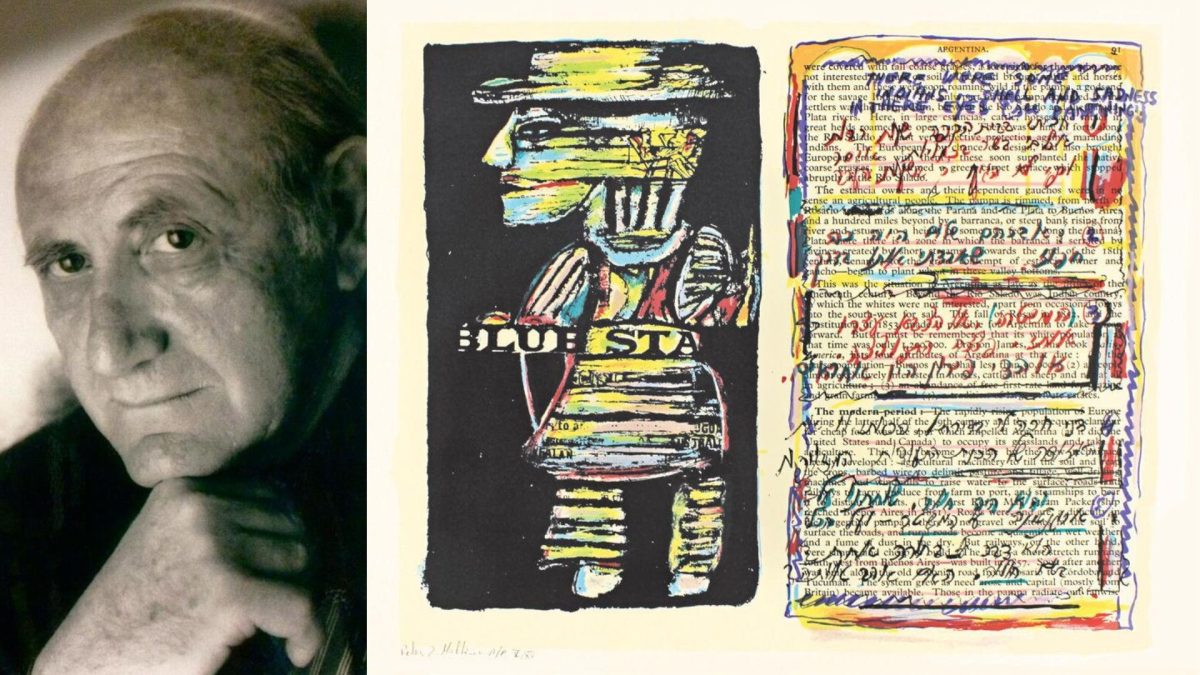
A nonprofit, independent news source to inform, inspire, educate and connect the St. Louis Jewish community.
- Make a Donation or Tribute
- Advertising
- Newspaper subscription
- Email newsletters
- Change of address
- Submit a simcha announcement
- Submit an obituary
- Write a letter to the editor
- Submit a Newsmakers item

- You are here:
- American Chemical Society
- Students & Educators
- Science Outreach
- Celebrating Chemistry
The Electromagnetic Spectrum: Exploring the Colors of Light
By jackie trischman.

Did you know that the world around us is filled with different types of lightwaves? From the warm glow of the sun to audible radio waves and invisible gamma rays, electromagnetic waves (action between particles that have an electric charge) surround us. But did you know that there's more to light than meets the eye? Let’s explore the amazing world of the electromagnetic spectrum!
- Radio waves have the longest wavelengths. They are used to send signals for radios, televisions, and even cell phones.
- Microwaves have slightly shorter wavelengths and are commonly used for cooking food in microwave ovens.
- Infrared light has longer wavelengths than visible light, and we can feel it as heat. In fact, some animals, like snakes, can see in the infrared part of the spectrum!
- Visible light is what we can see with our eyes. It includes all the beautiful colors of the rainbow, from red to violet.
- Ultraviolet light has shorter wavelengths than visible light. This kind of light can give us sunburn if we’re exposed to it for too long.
- X-rays have even shorter wavelengths and are used by doctors to see inside our bodies.
- Gamma rays have the shortest wavelengths. They are produced by nuclear reactions and are used to treat cancer.
Understanding the electromagnetic spectrum is important because it allows us to see and communicate with each other. Without it, we wouldn’t have televisions, radios, or even cell phones. It also helps scientists explore the world around us. For example, telescopes like the James Webb Space Telescope, use different parts of the spectrum to study distant stars and galaxies.
The electromagnetic spectrum is a rainbow of light waves that surround us — but we only see a small part of it. From radio waves to gamma rays, each type of light has its own properties and uses. By understanding the electromagnetic spectrum, we can appreciate the beauty and importance of light in our everyday lives.
To learn more about the electromagnetic spectrum, check out these links:
NASA’s Introduction to the Electromagnetic Spectrum — a guide to specially designed for kids
Electromagnetic Spectrum
Jackie Trischman is Dean of the College of STEM at California State University San Marcos.
In this issue
Picture Perfect Chemistry The Adventurous Journey of Medical Imaging The Chemistry of Developing Photographs Photography Through the Years The Science Behind Digital Imaging The Adventures of Meg A. Mole, Future Chemist: Dr. Olivia Kuzio Science Safety Tips Activity: Investigating Images in Invisible Inks — It's Incredible! Activity: Imaging Without Light Activity: Anthotype Printing with Turmeric ... Sun Prints! Words to Know
Accept & Close The ACS takes your privacy seriously as it relates to cookies. We use cookies to remember users, better understand ways to serve them, improve our value proposition, and optimize their experience. Learn more about managing your cookies at Cookies Policy .
1155 Sixteenth Street, NW, Washington, DC 20036, USA | service@acs.org | 1-800-333-9511 (US and Canada) | 614-447-3776 (outside North America)
- Terms of Use
- Accessibility
Copyright © 2024 American Chemical Society

IMAGES
COMMENTS
Credit: Bruce Blaus. The incoming stream of photons then makes its way through your cornea and lens and onto your retina, a highly vascular layer of tissue that lines the back of the eye. There ...
The path of light through the eye begins with the objects viewed and how they produce, reflect or alter light in various ways. When your eyes receive light, it begins a second journey through the eye's optical parts that adjust and focus light to the nerves that carry images to your brain. Standing outdoors, for example, a night scene may be ...
Transcript. Just 370,000 years after the universe began in a big bang, all that existed was a hot plasma, similar to a candle flame. Protons and electrons, seen as the red and green balls, were bouncing around scattering the light. The particles of light, called photons (shown in blue), couldn't go far without colliding with an electron.
This artist's animation depicts the "life" of a photon, or particle oflight, as it travels across space and time, from the very earlyuniverse to the Planck s...
What is the physics behind light? A photon is a particle of light that was born when a proton and an electron combined in the plasma phase of the universe, nearly 400,000 years after the Big Bang. As the universe transitioned from plasma to neutral gas, light could flow freely for the first time, and the photon began its journey.
It takes approximately 8 minutes for our photon to travel the 93,000,000 miles (150 million kilometers) from the Sun to Earth. Once there, it dodges space debris and satellites and enters the ...
Celestial Tour: The Journey of Light. View Video. View with voiceover. Duration: 7 minutes. Last Updated: 08/01/2024. Uploaded: 04/18/2017. The James Webb Space Telescope, located far beyond Earth's Moon in the bitter cold of space, will search for infrared light, the radiation humans perceive as heat.
Bottom line: Take a tour of the solar system at the speed of light. This video imagines the journey of a photon leaving the sun and traveling out past the inner planets to Jupiter. X 56 Facebook ...
INFO Drama Title: The Journey of Light 与光同行 Origin: China Episodes: Release Date: 2022 SYNOPSIS After a car accident Huo Xi's fangirl Qiao Qiao switches into the idol she hates the most, Sheng Qiao's body and suddenly she no longer exists and there's no news about her. Qiao Qiao then faces the fact that she have to live in Sheng Qiao's body and finally understand how tough it had been ...
Journey Of Light. The light that illuminates our planet is made deep inside the sun and takes some 40,000 years to travel through the sun's layers. Particles of light form from atoms undergoing nuclear fusion in the sun's innermost layer known as the core. The light then flows through the sun's interior for millennia, slowly bubbling up ...
When light travels between two places (from the Sun to the Earth or from a flashlight to the sidewalk in front of you on a dark night), energy makes a journey between those two points. The energy travels in the form of waves (similar to the waves on the sea but about 100 million times smaller)—a vibrating pattern of electricity and magnetism ...
Dear Xitan, Look up to the twinkly stars and you'll witness starlight traveling from deep space to your eyeballs. That twinkling you see is the light taking lots and lots of detours. Out in space, astronauts don't see stars twinkle. I learned about this from my friend, astronaut John Fabian. He studied engineering at Washington State University and flew two space shuttle missions with NASA ...
Five Photons explains what we know about the universe through five different journeys of light across space and time. They are tales of quantum physics and general relativity, stars and black holes, dark matter and dark energy. Let yourself be swept away on a journey of discovery towards a deeper understanding of the cosmos. Read More.
1) Electromagnetic Fields. Most of the processes that accelerate particles to relativistic speeds work with electromagnetic fields — the same force that keeps magnets on your fridge. The two components, electric and magnetic fields, like two sides of the same coin, work together to whisk particles at relativistic speeds throughout the universe.
It's impossible to predict who Elaina will meet on each leg of her journey, but one thing is always certain: With every new encounter, adventure is never far . imprints: ... The Journey of Elaina, Vol. 9 (light novel) Wandering Witch: The Journey of Elaina, Vol. 8 (light novel)
Let's summarise the journey light takes to our eyes (from any illuminated object): Light is created by a luminous object. Light travels through space. Light is reflected off an illuminated object. Light is detected by our eyes (after travelling through space again) Over the next set of pages, we will understand what happens during steps 2-4.
Magnification of Light Through a Microscope. When light passes through a microscope, it follows a fascinating journey. It enters the objective lens, which works to magnify the image by projecting a larger version of it onto the eyepiece lens. The eyepiece then further magnifies this image, allowing us to see a highly magnified view of our specimen.
Azure. Publisher. SB Creative (JP) Yen Press (EN) Volumes. 22. Release. April 15, 2016 - present. Wandering Witch: The Journey of Elaina (魔女の旅々, Majo no Tabitabi, lit. " A Witch's Journey ") is a Japanese light novel series written by Jougi Shiraishi and illustrated by Azure.
The light's journey begins just moments after the big bang that created our universe 13.8 billion years ago. At that time, the universe was a hot plasma of electrons, protons and photons (green and red balls, and blue linear particles, respectively). The light repeatedly bounces off electrons, and as result can't travel very far.
Consider reading the Bible, attending church or Bible studies, and joining a community of like-minded believers who can offer love, support, and guidance on your spiritual journey. How to Walk in the Light. Walking in the light means to live in alignment with God's principles and values. It involves making deliberate choices to live in a way ...
Guide. To get old game just right click on the game in Library, select Properties -> BETAS and chose "-test" After finishing download right click on the game in Library again, go to LOCAL CONTENT and Show files in folder.
Looking for information on the light novel Majo no Tabitabi (Wandering Witch: The Journey of Elaina)? Find out more with MyAnimeList, the world's most active online anime and manga community and database. Although Elaina spends her free time reading various works, one particular book stands out from the rest: The Adventures of Nike—a short collection of stories recounting the exhilarating ...
Taking flight to see 'The City of Light' | Journey to Paris. Jeffrey Milstein, 80, got the rare opportunity to board a helicopter and soar above the Olympic host city for some stunning pictures. ... Journey to Paris. While tourists and locals click away hoping to get memorable pics of Paris from the ground, Milstein is in rarified air.
Experience the powerful ministry of Apostle Joshua Selman in this transformative message. Dive deep into spiritual truths and embark on a journey beyond salv...
In the Old Town of Rhodes, a picturesque tourist destination in the Aegean Sea, stands a monument to a dark period in the island's past. In the former "Djuderia," the Jewish quarter, a marble obelisk commemorates the deportation of the island's small but vibrant Sephardic Jewish community to Auschwitz-Birkenau on July 23, 1944. The 1,700 Jews of Rhodes had the misfortune not only of ...
Its three-year journey to TOU rates began with an initial small pilot. Then, GELD conducted a significant trial program with heavy communication in various media before implementing TOU rates with residential customers. ... the Groton Electric Light Department Board voted to retire the standard residential rate effective September 24, 2023.
Infrared light has longer wavelengths than visible light, and we can feel it as heat. In fact, some animals, like snakes, can see in the infrared part of the spectrum! Visible light is what we can see with our eyes. It includes all the beautiful colors of the rainbow, from red to violet. Ultraviolet light has shorter wavelengths than visible light.
A Journey Through Another World: Raising Kids While Adventuring (異世界ゆるり紀行 ~子育てしながら冒険者します~, Isekai Yururi Kikō: Kosodate Shinagara Bōkensha Shimasu) is a Japanese light novel series written by Shizuru Minazuki and illustrated by Yamakawa. Originally published online since June 2016, AlphaPolis have published sixteen volumes of the series since ...
Rihanna sheds new light on her newest look as she reveals postpartum hair loss. Maiysha Kai. Health 'Summer House: Martha's Vineyard' star Jordan Emanuel documents her alopecia healing journey.
More than his way of giving back to humanity, the show symbolizes David's journey with the God complex—a personal issue that led to his hospitalization and bipolar diagnosis.